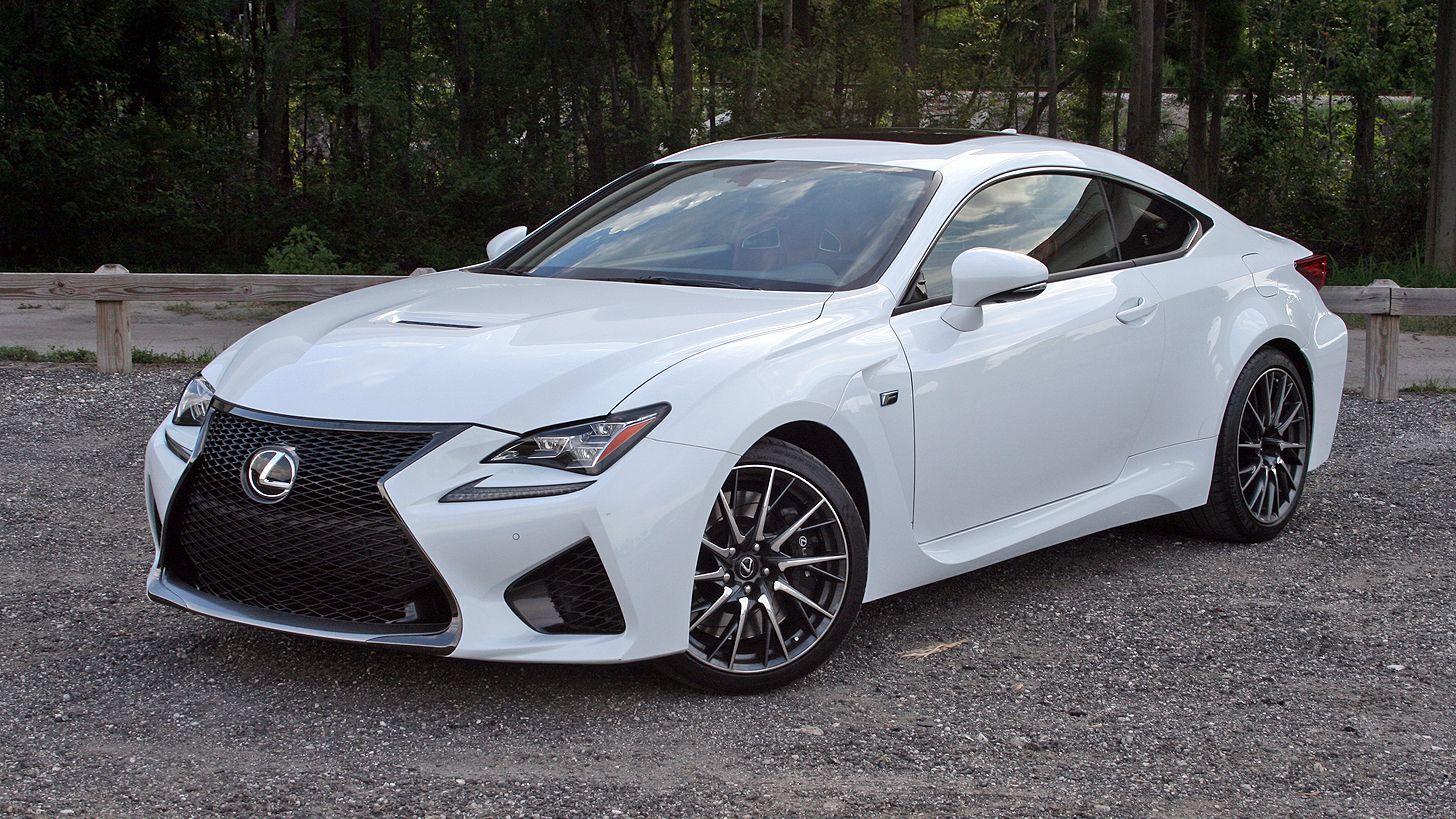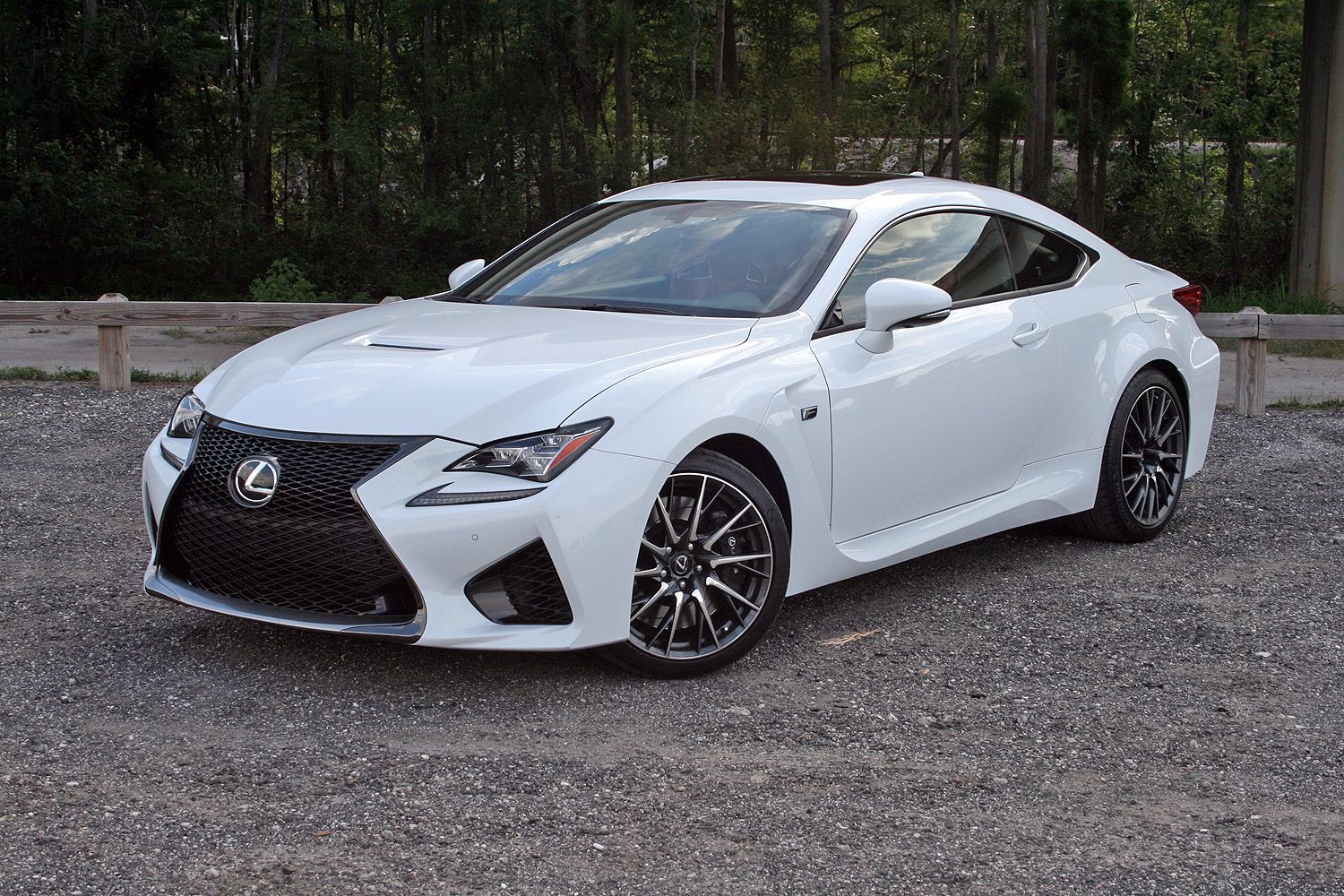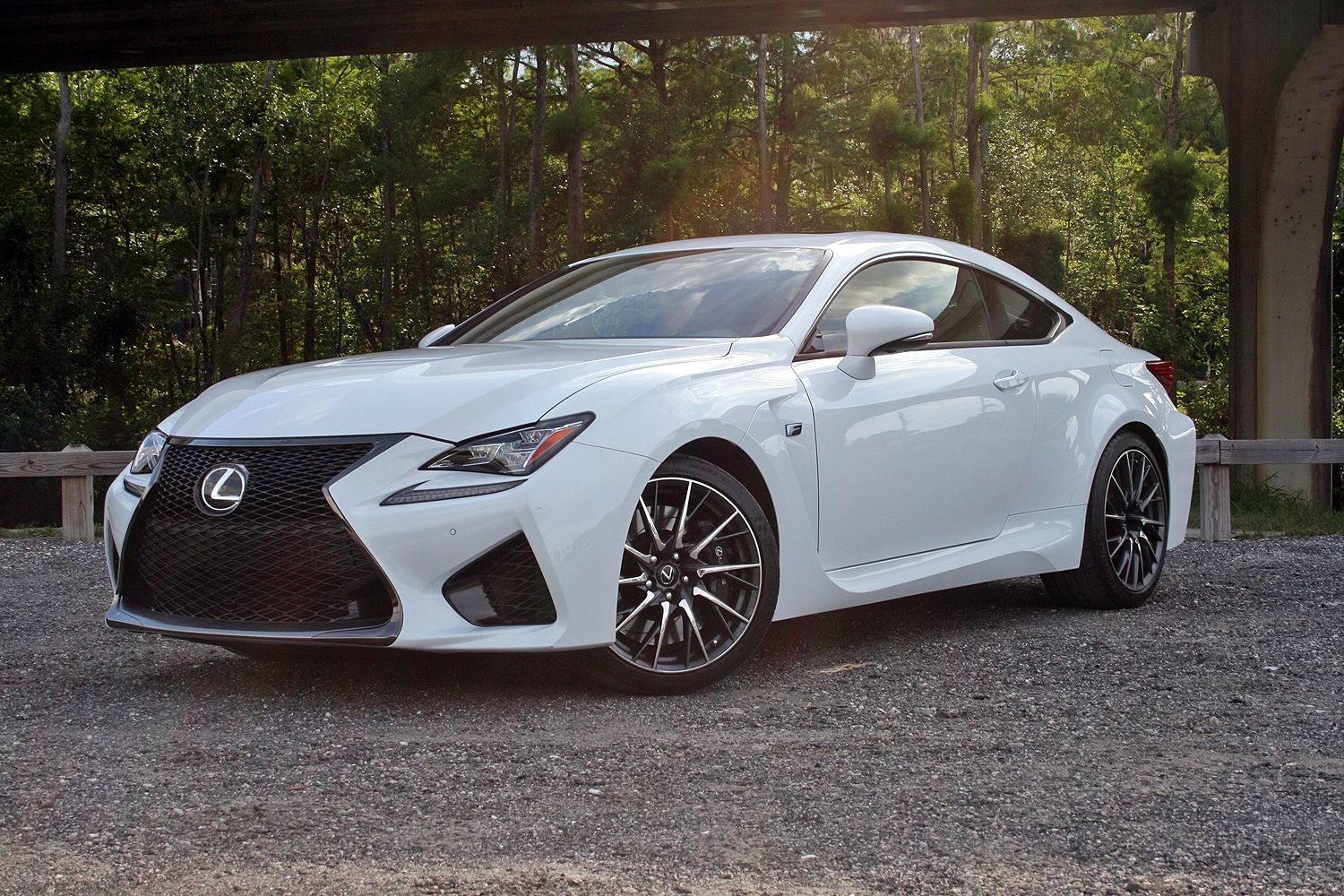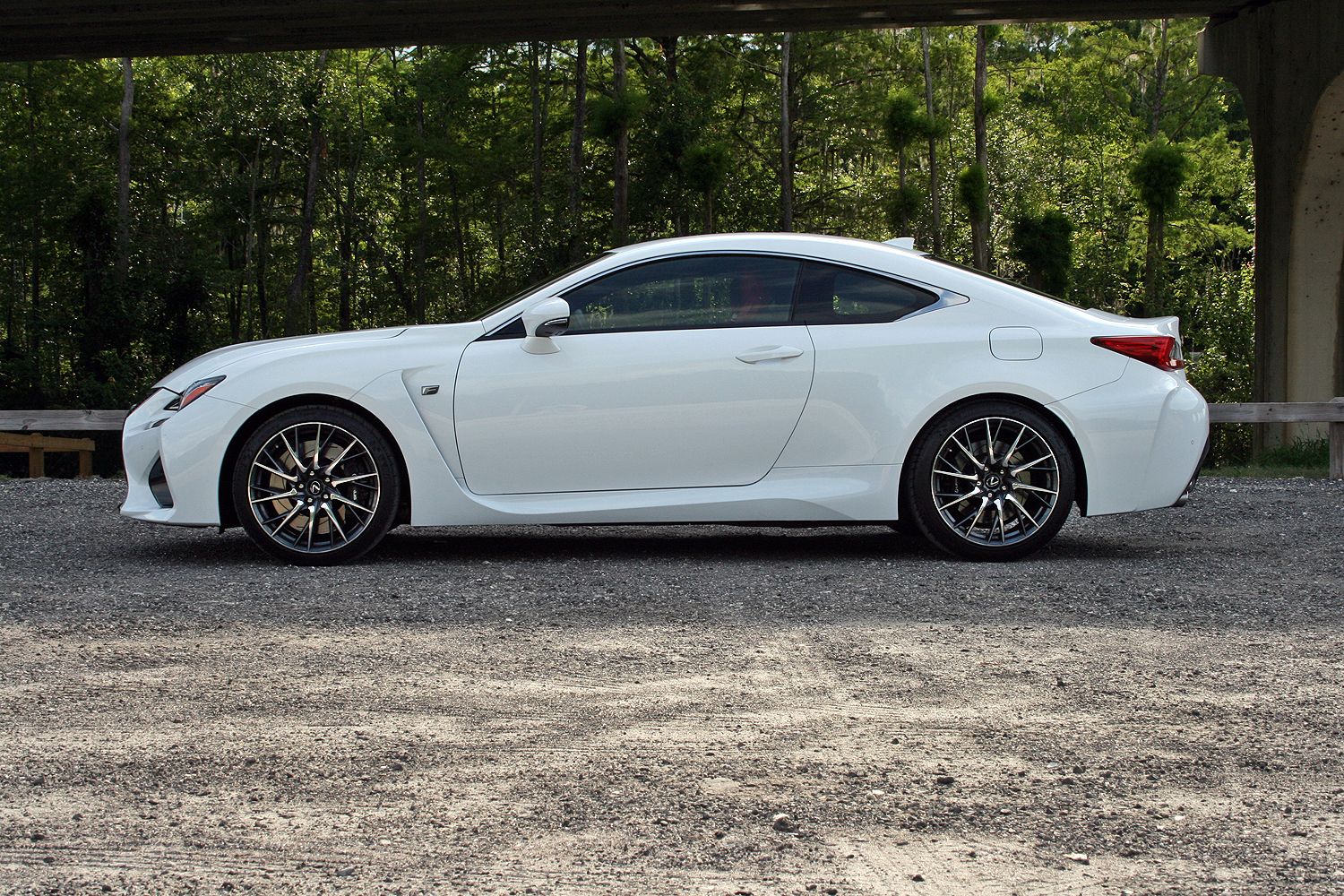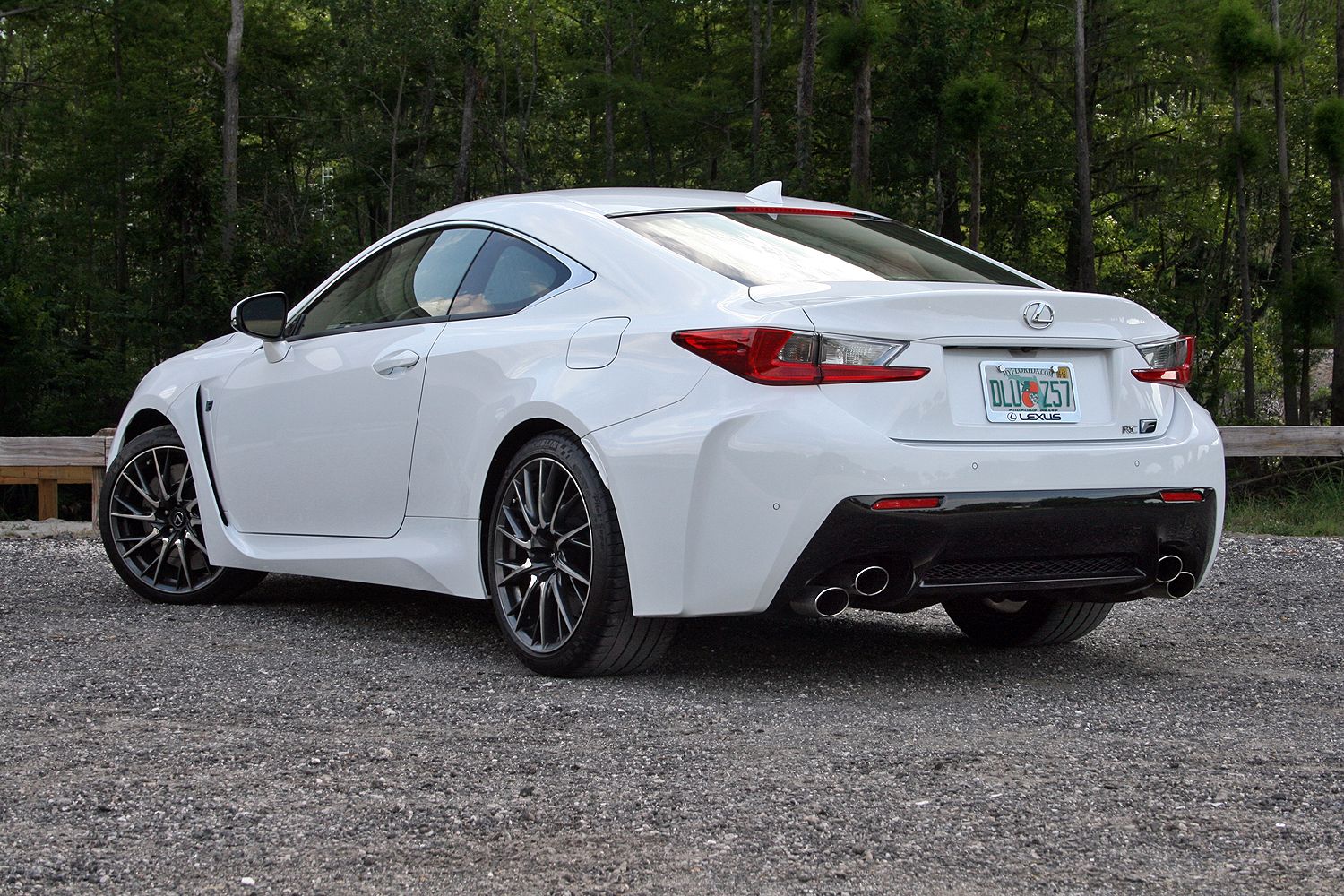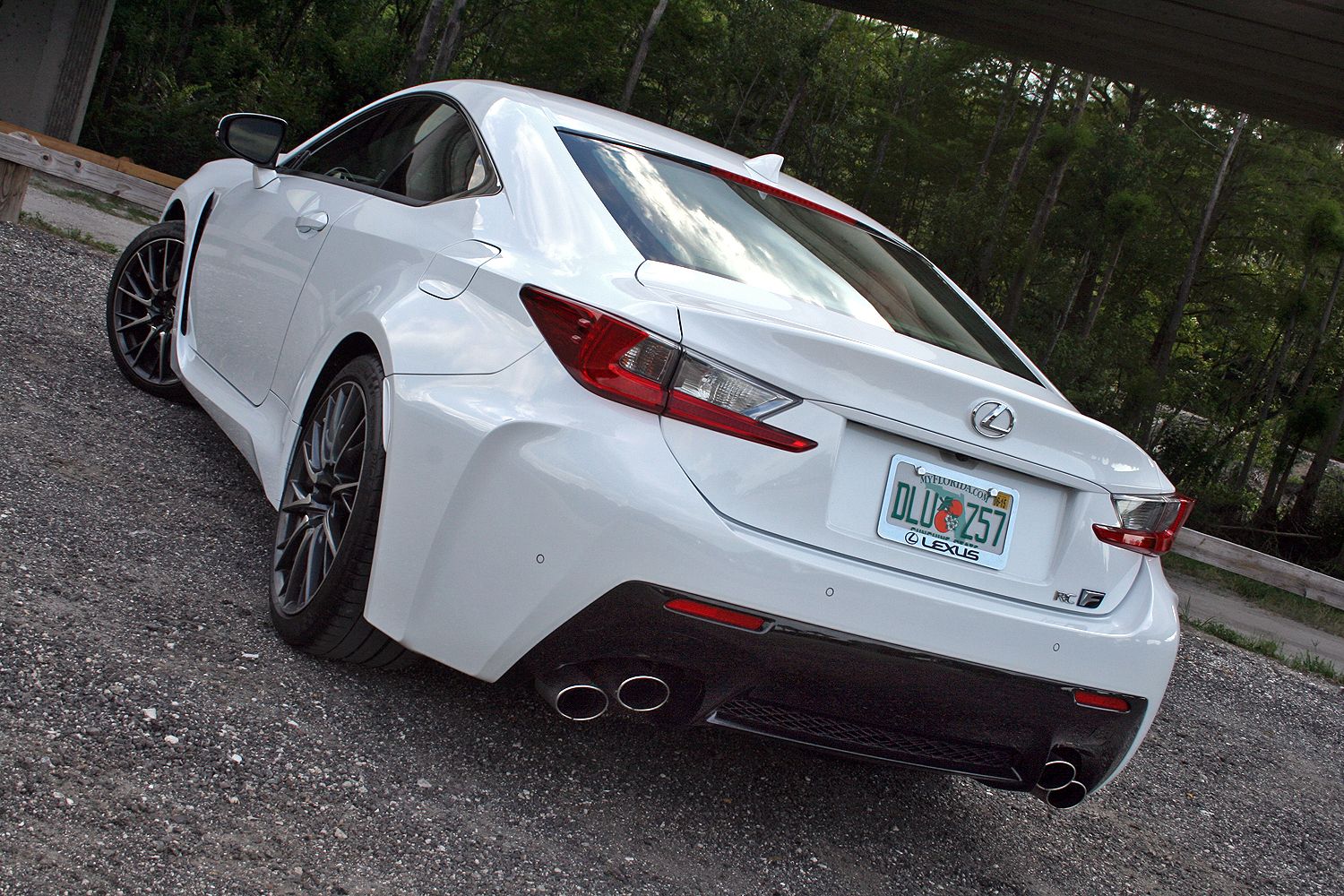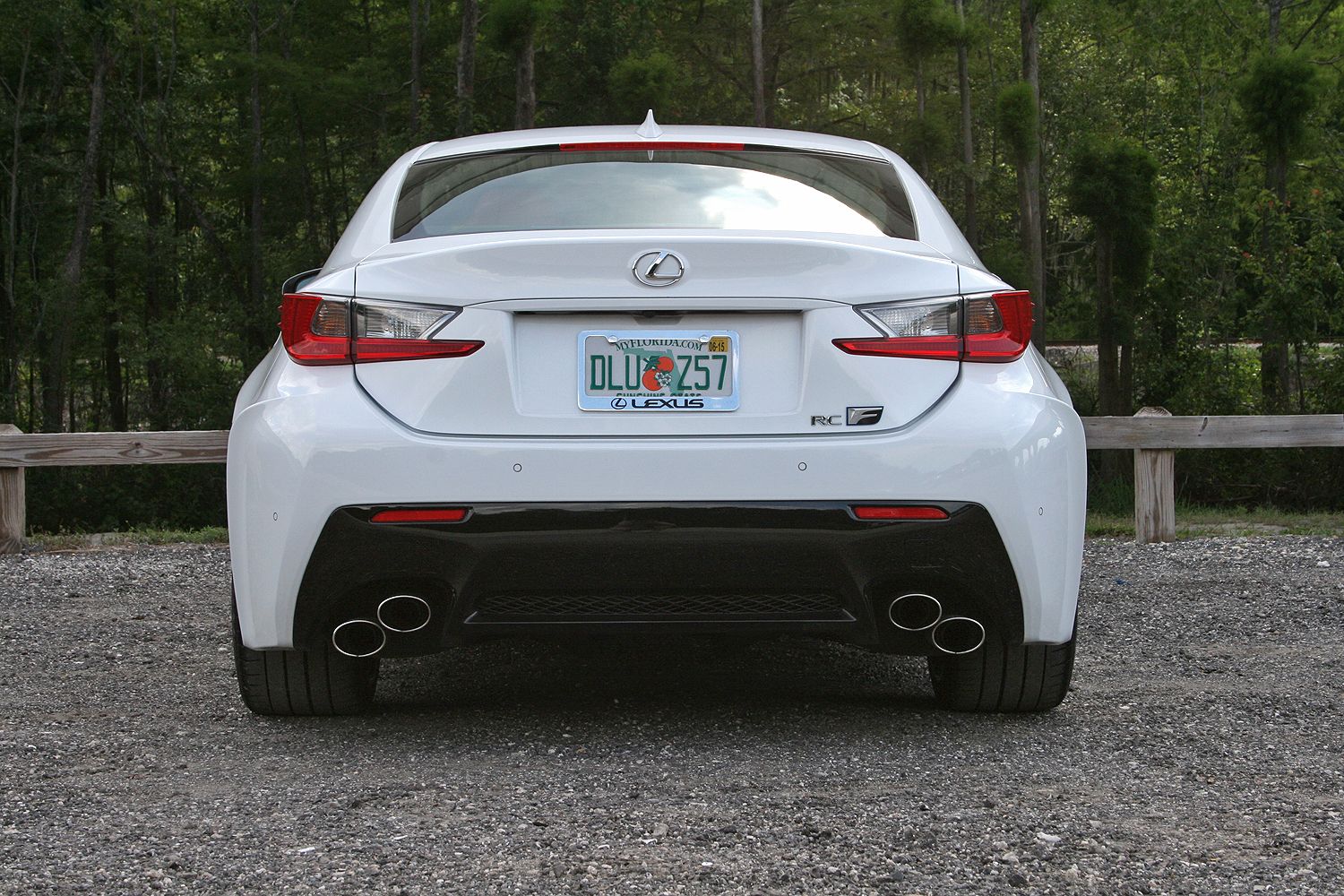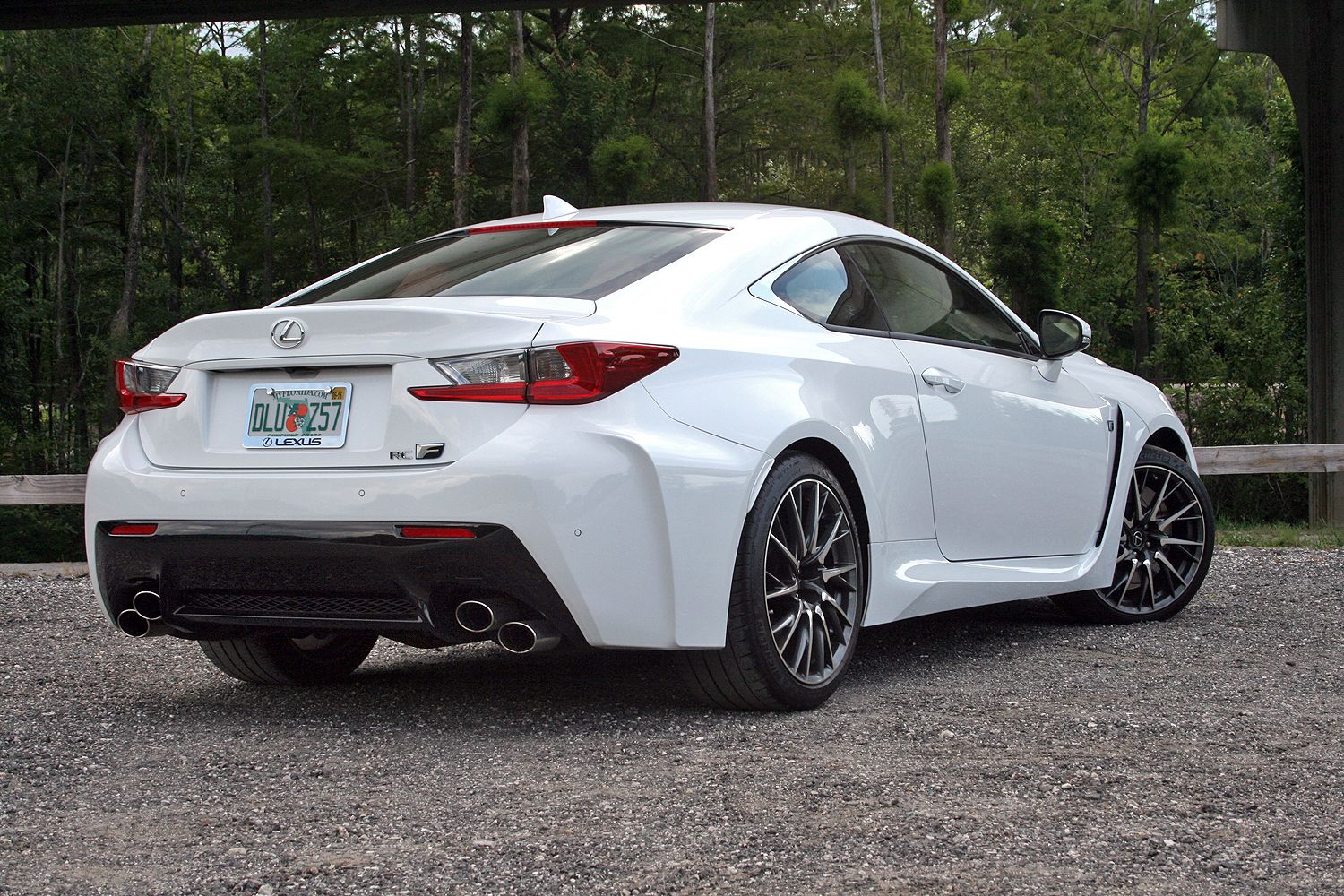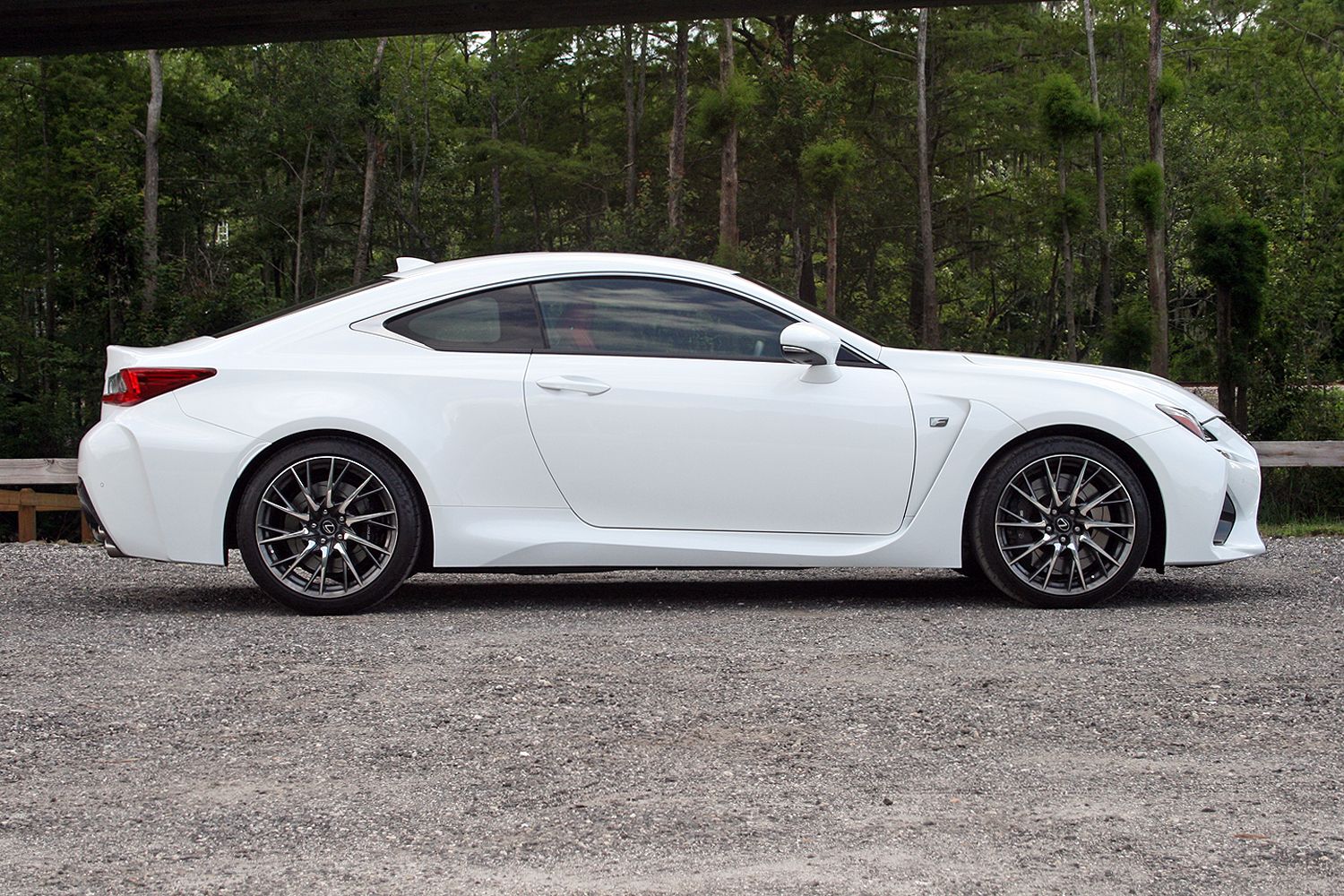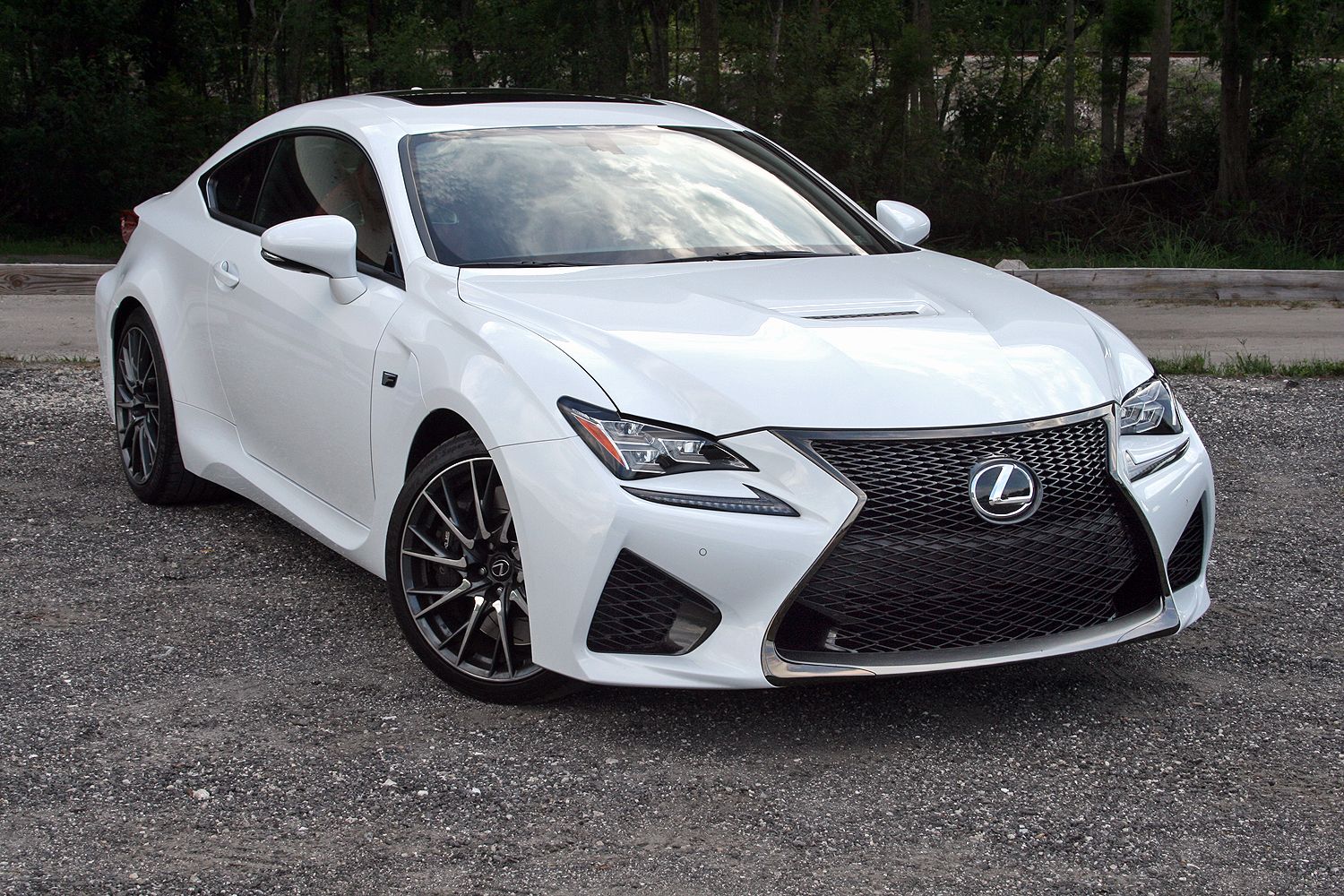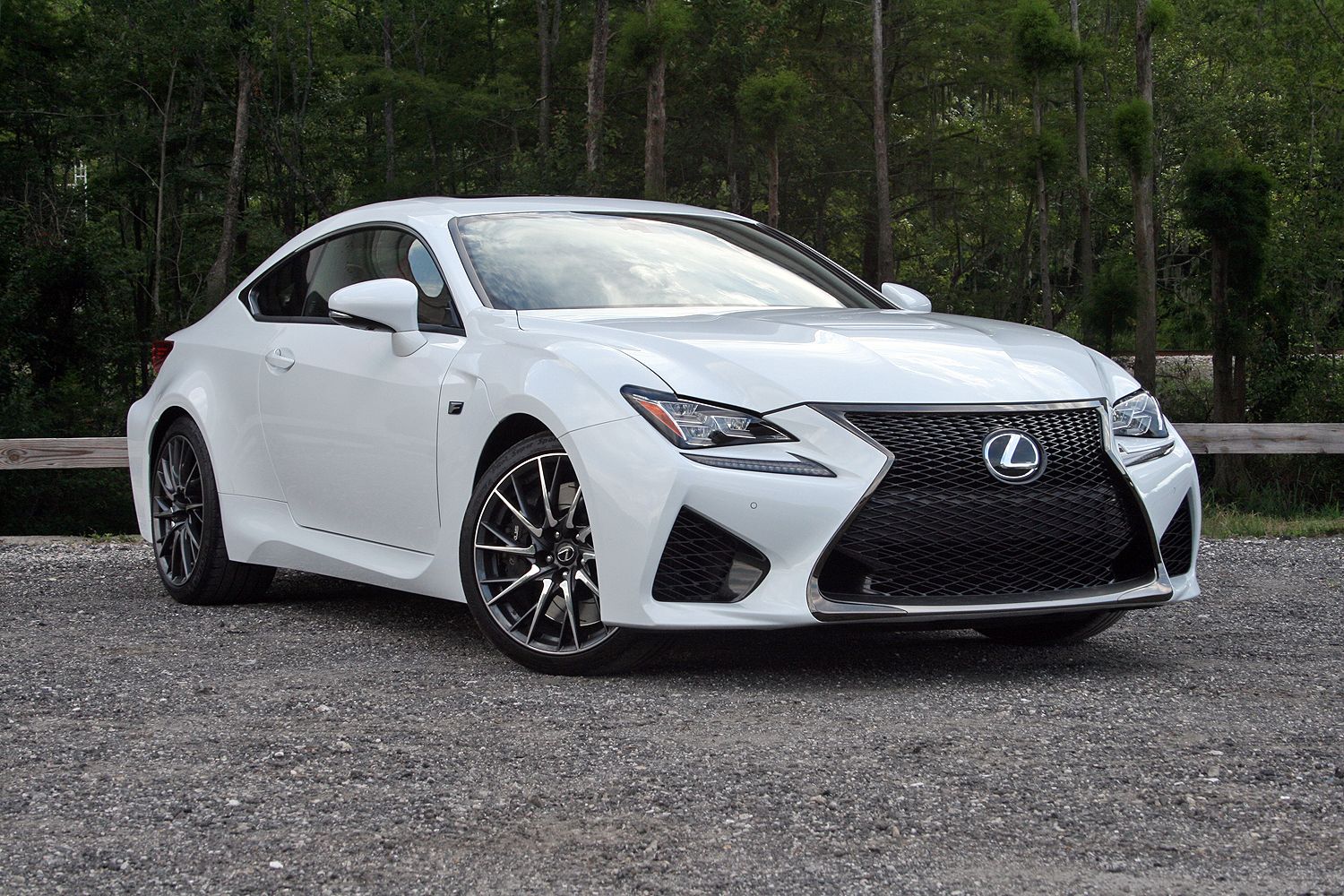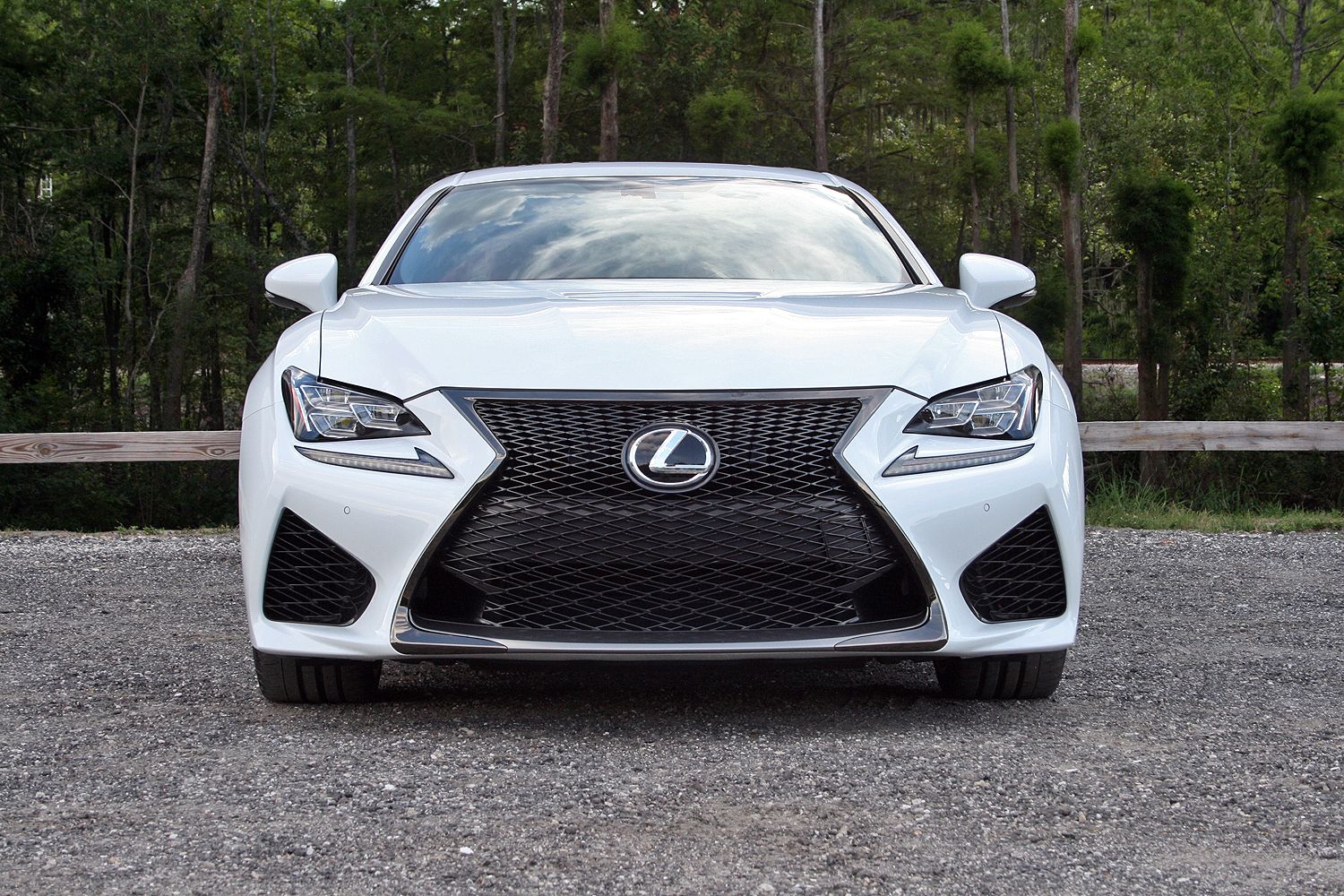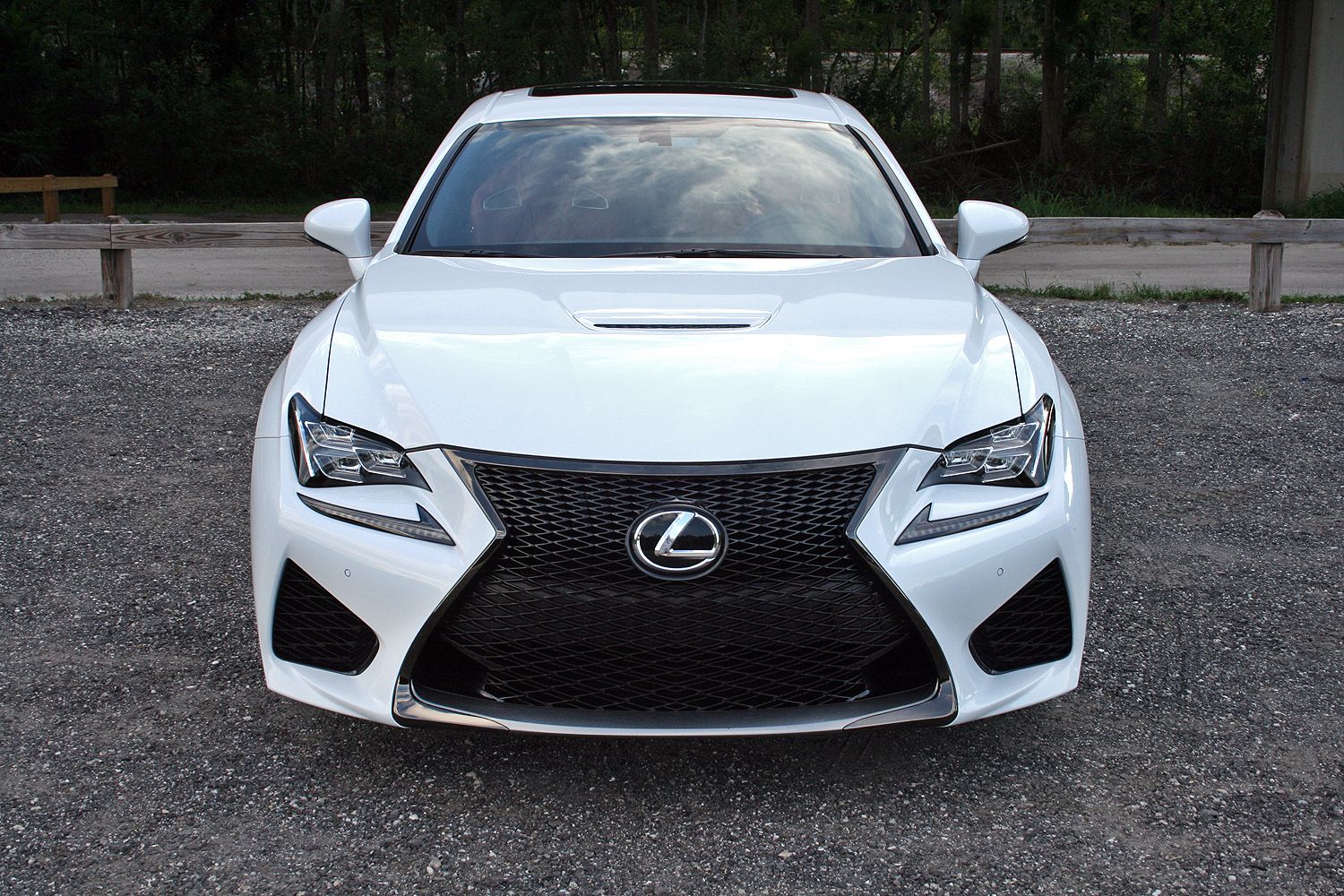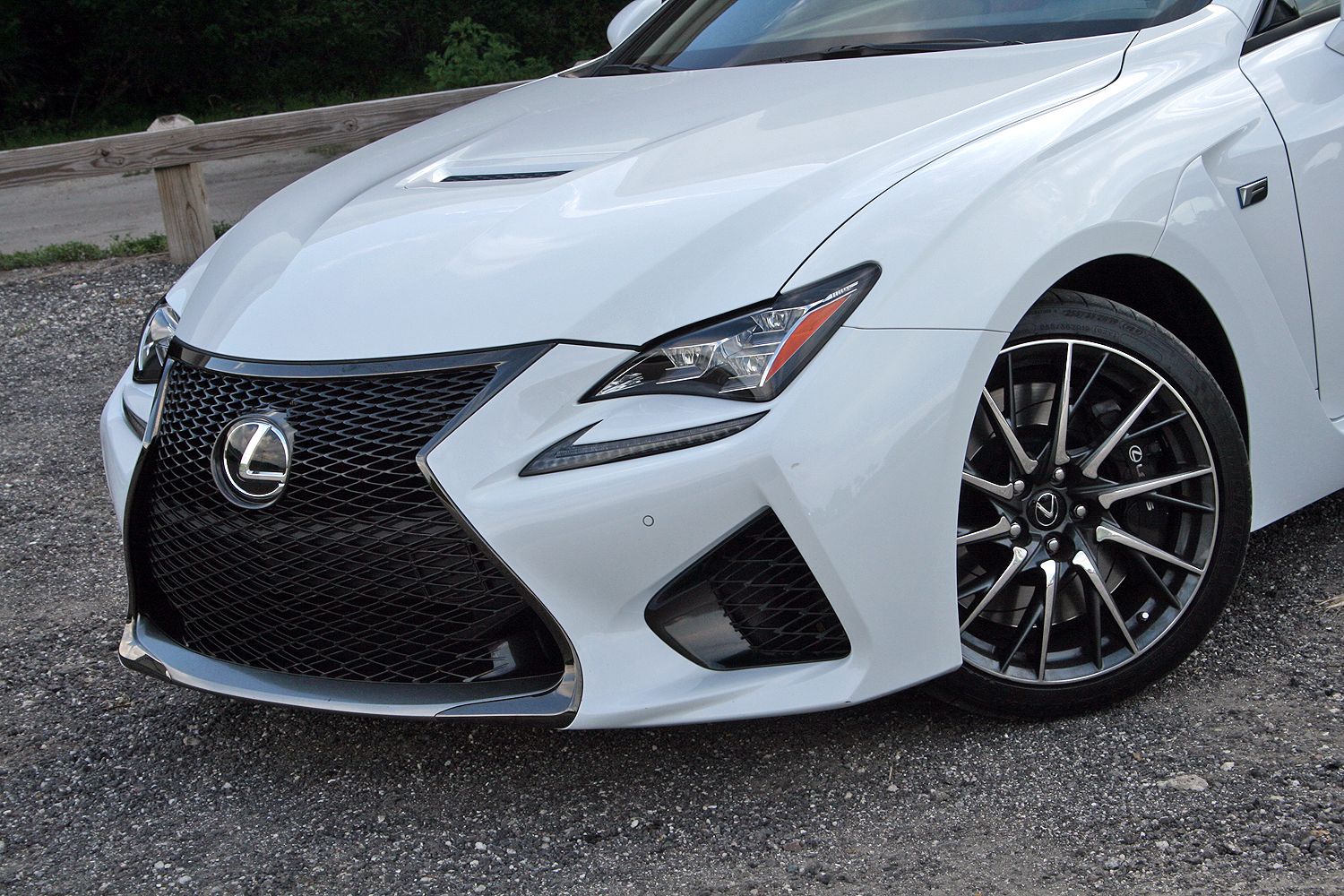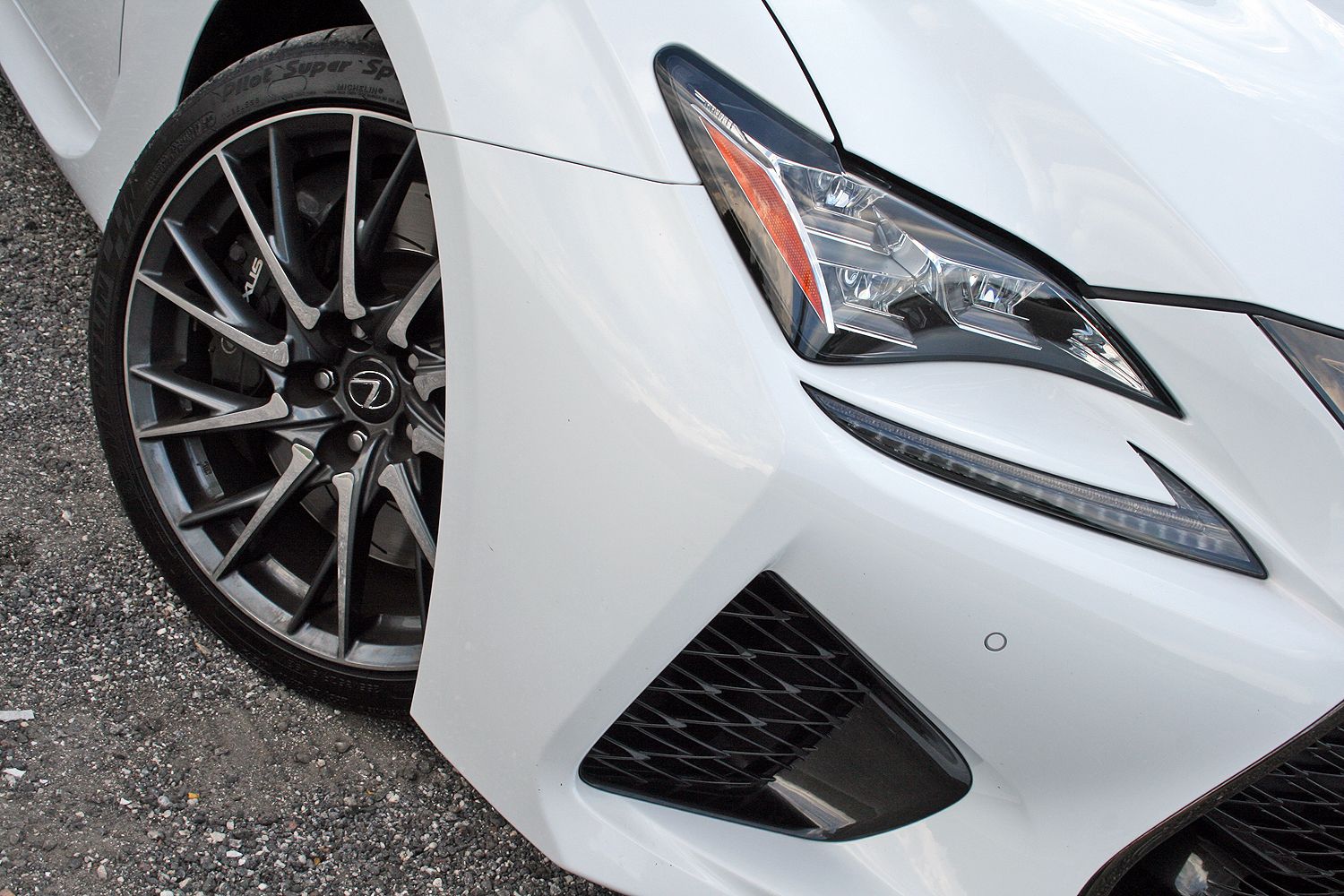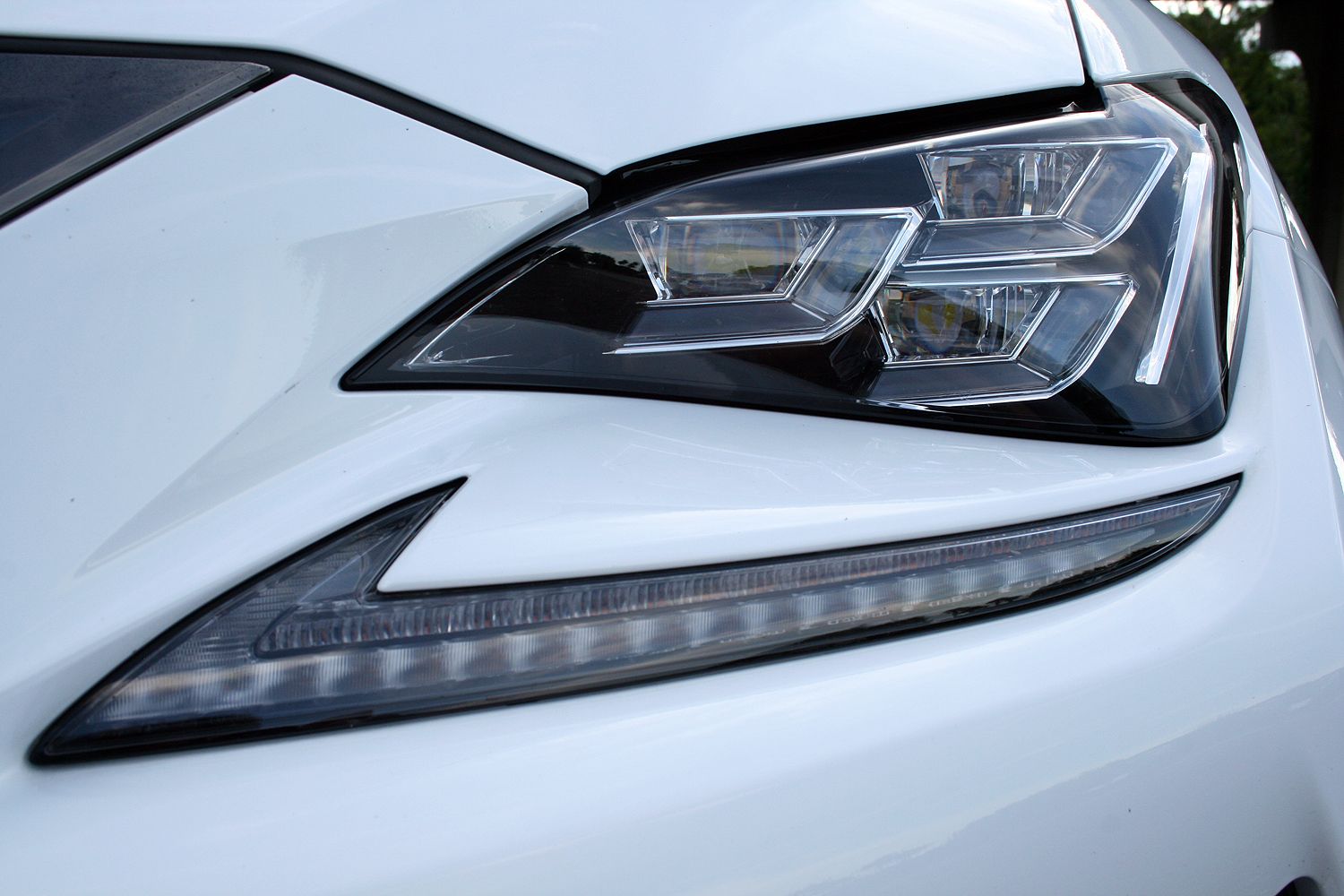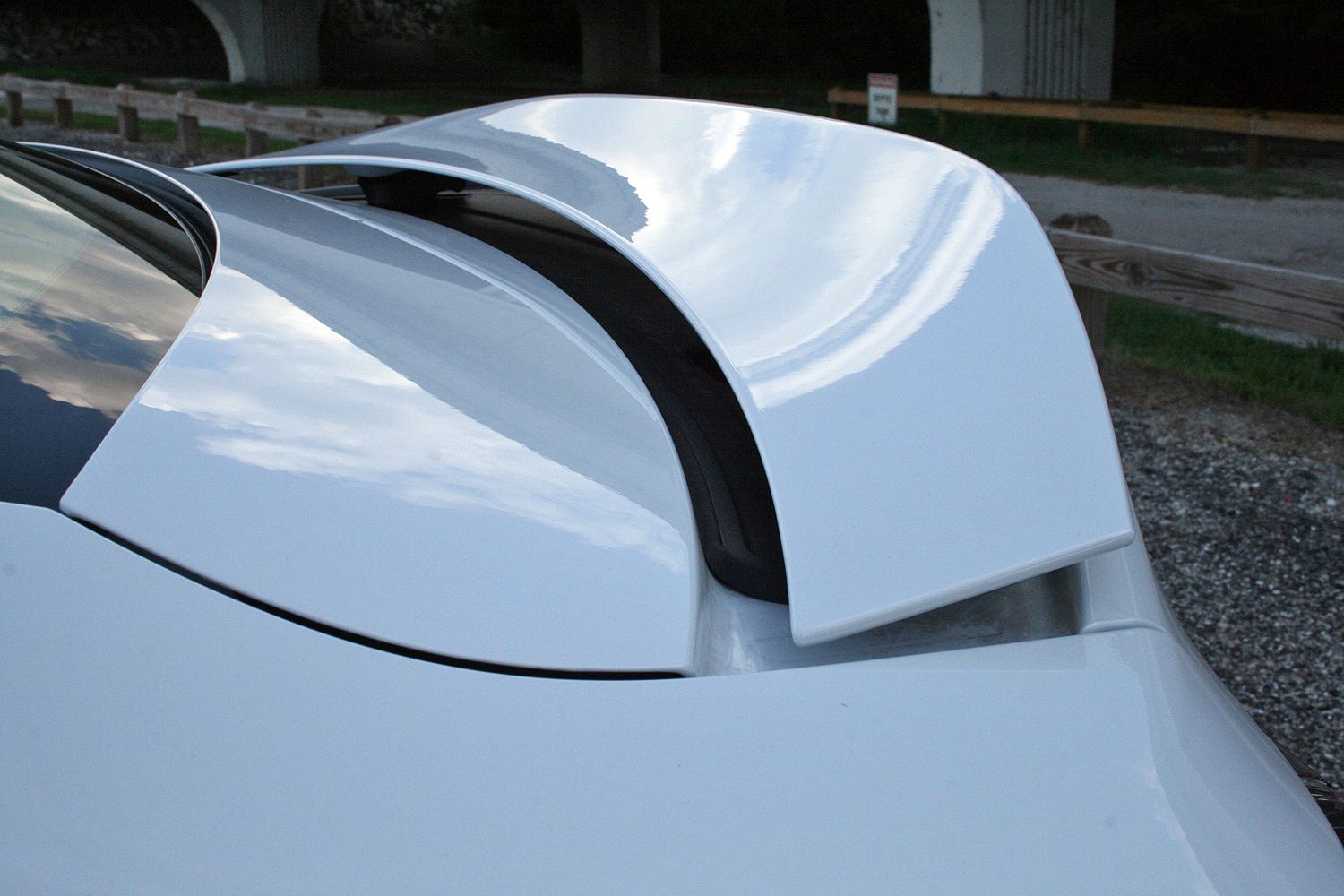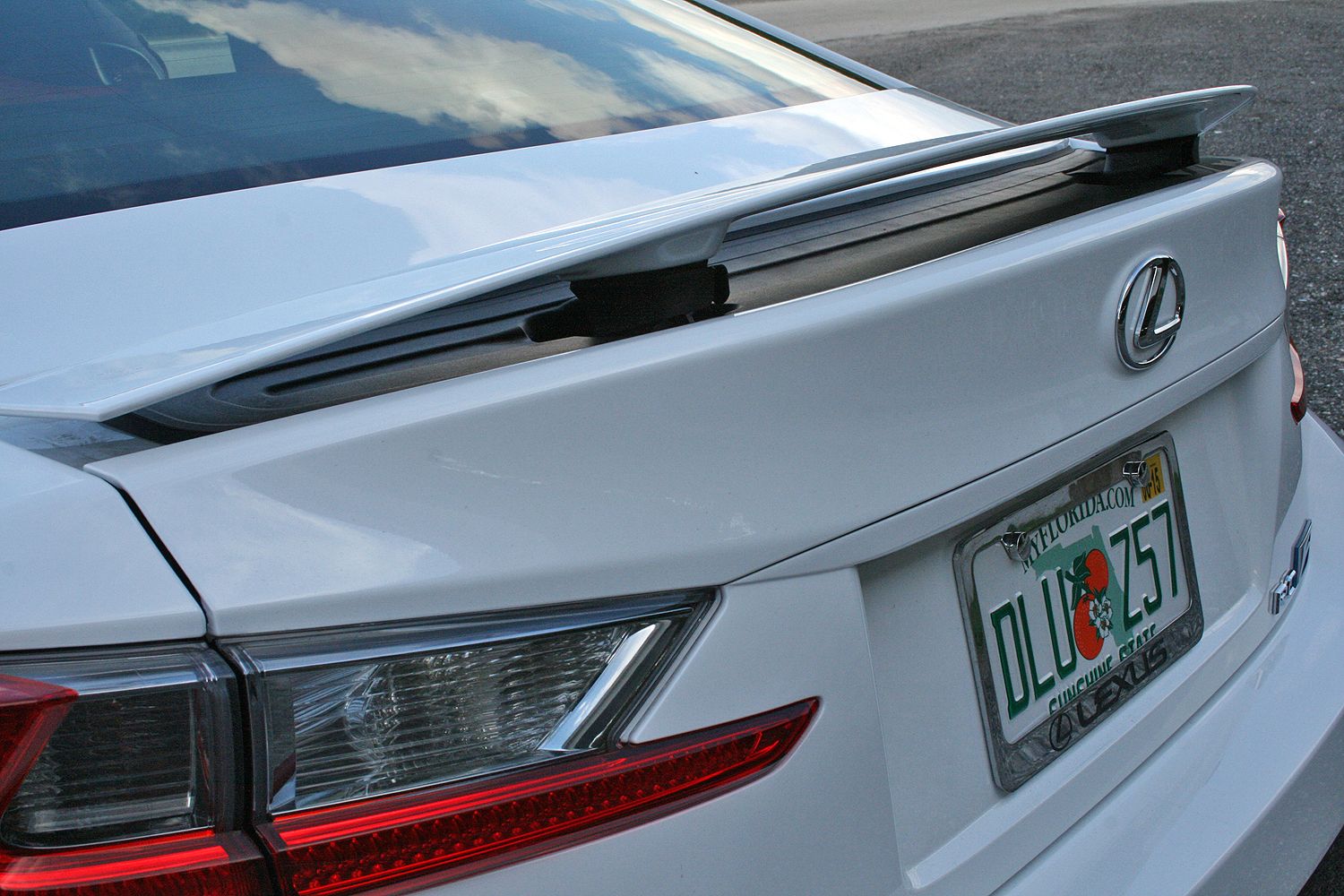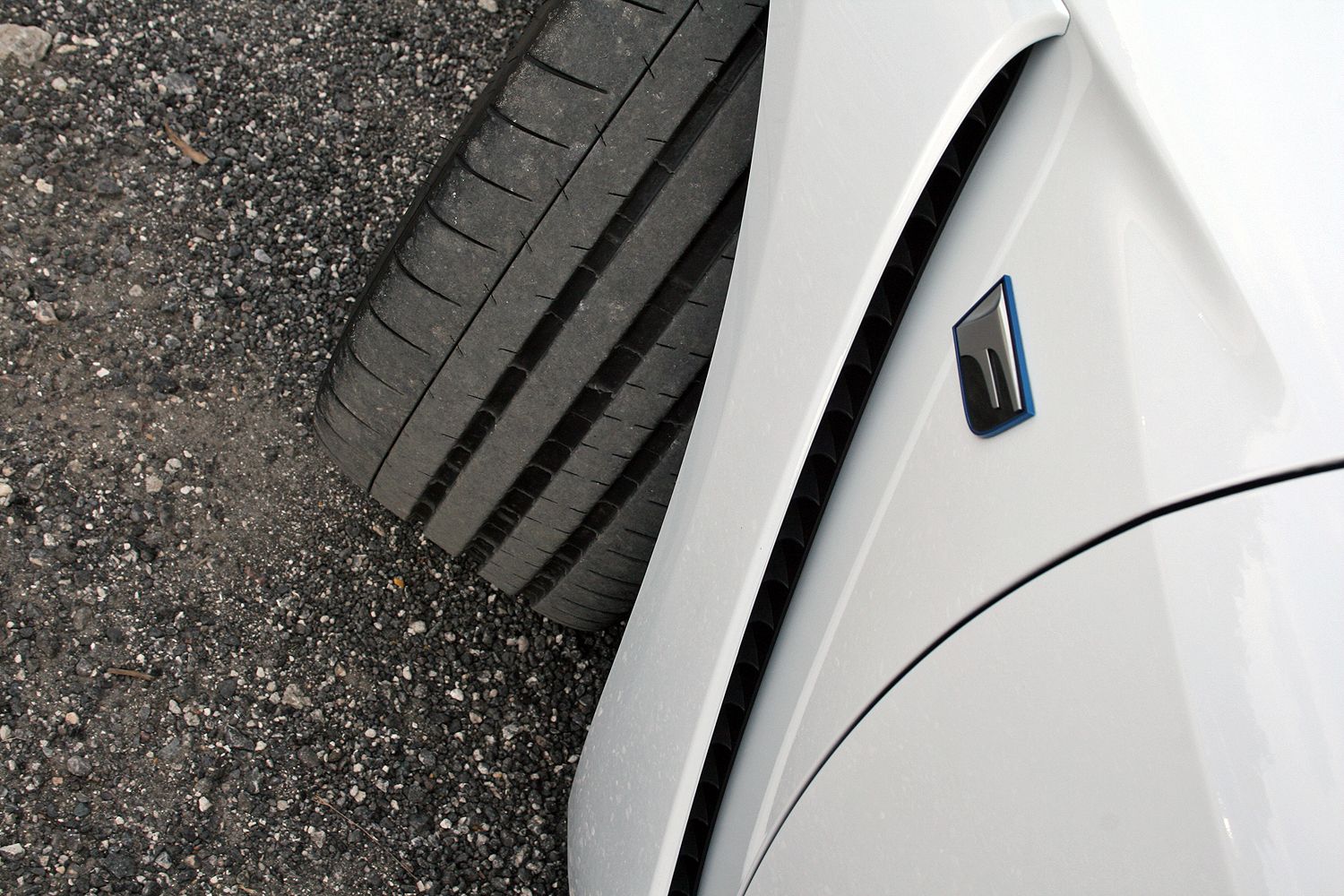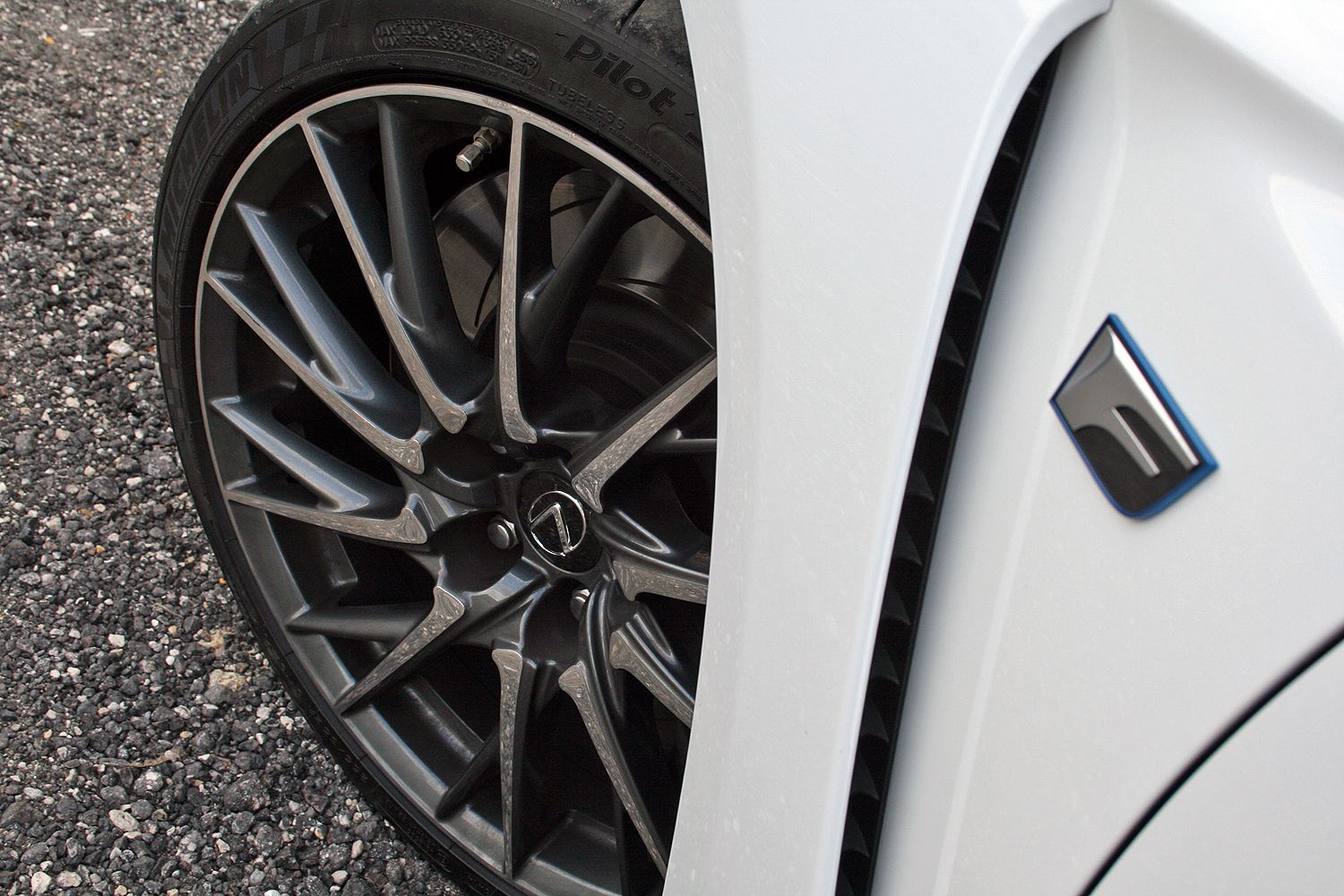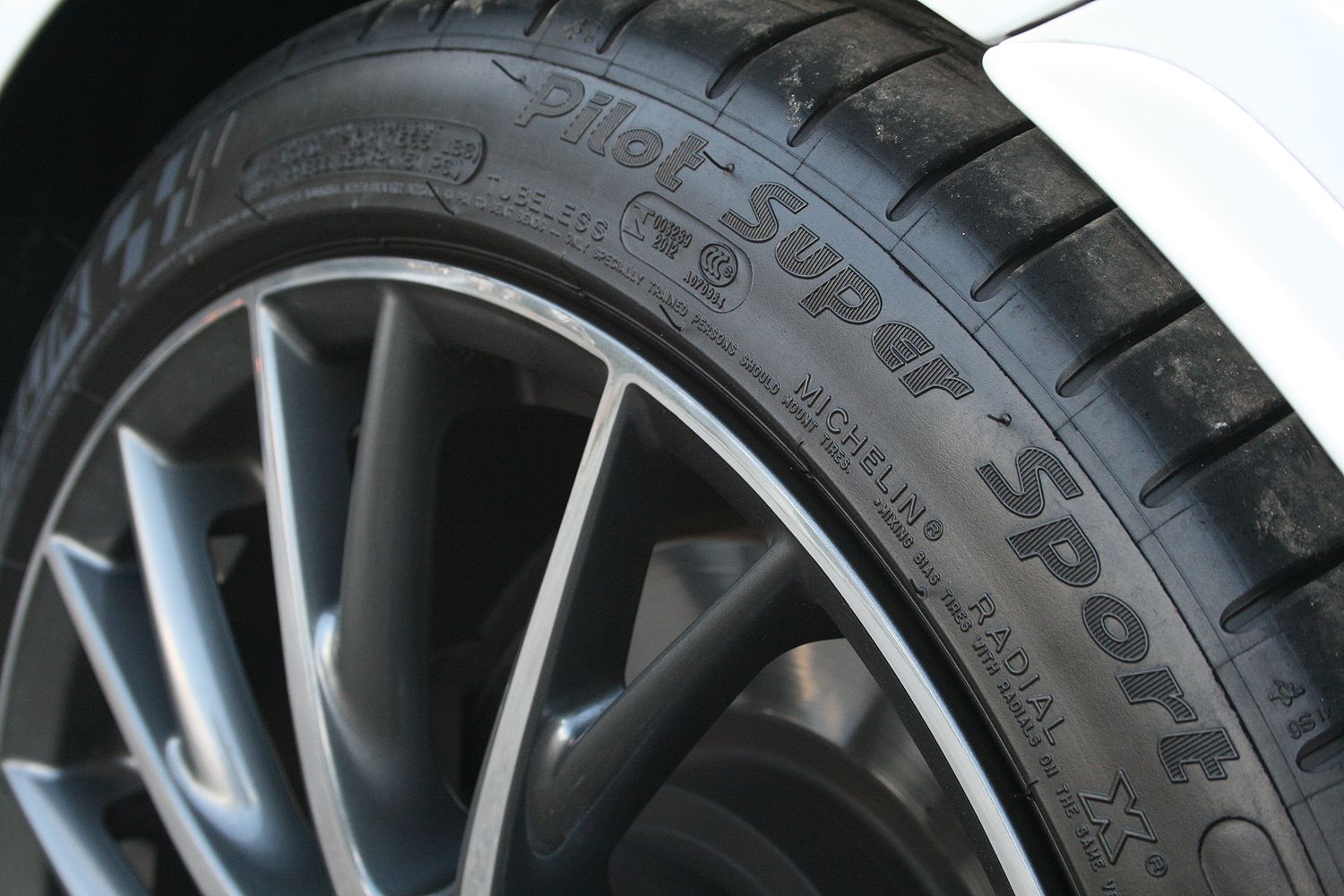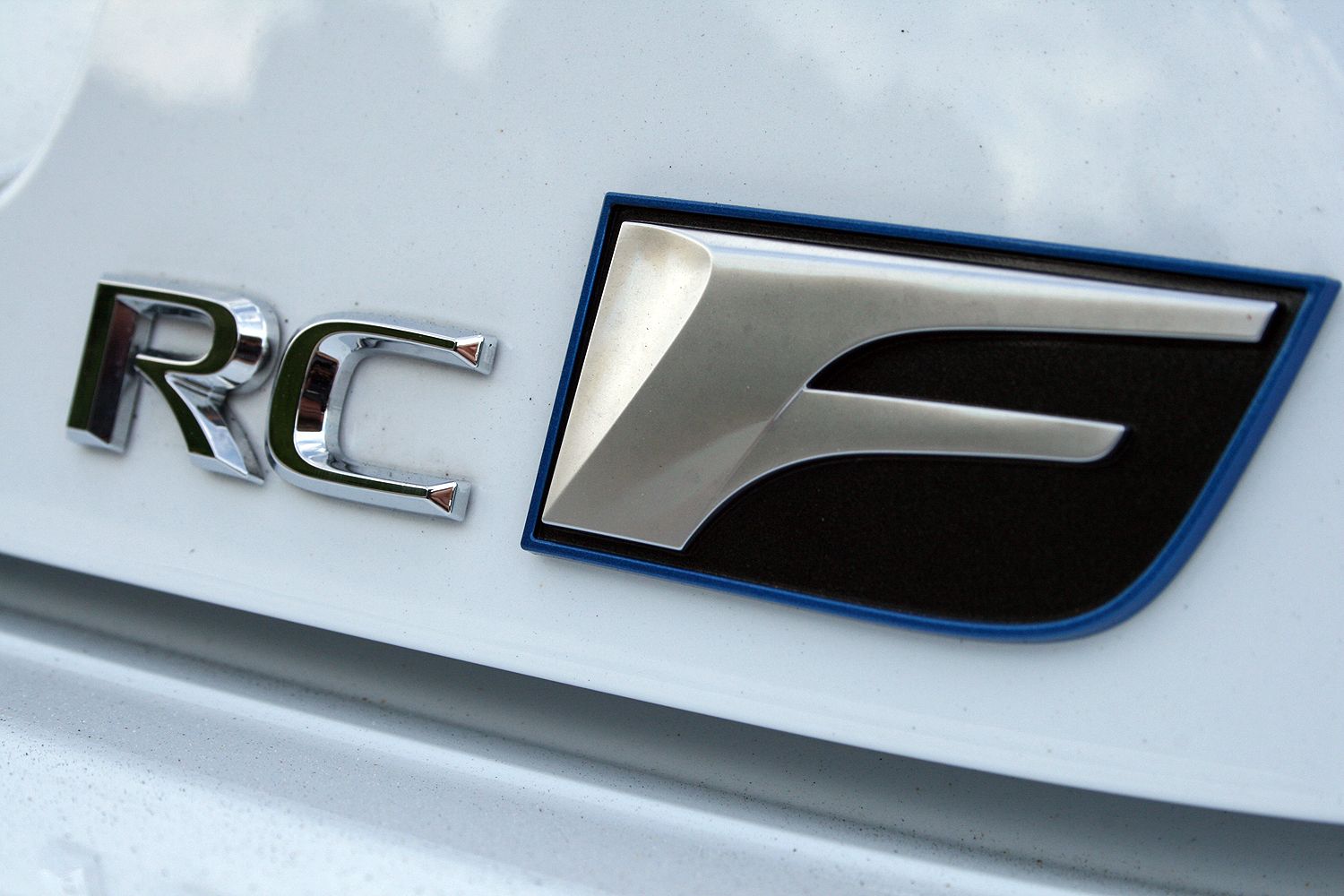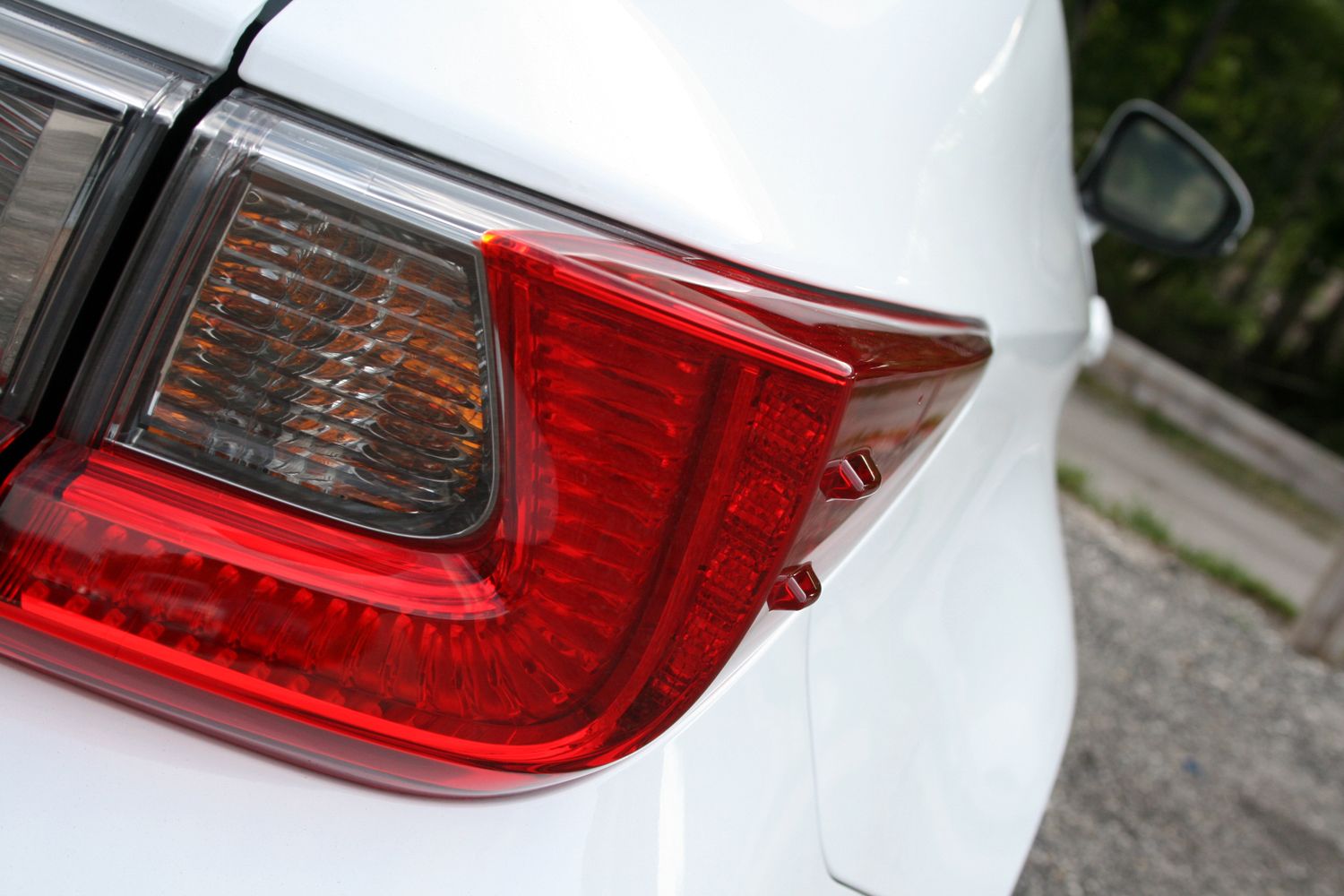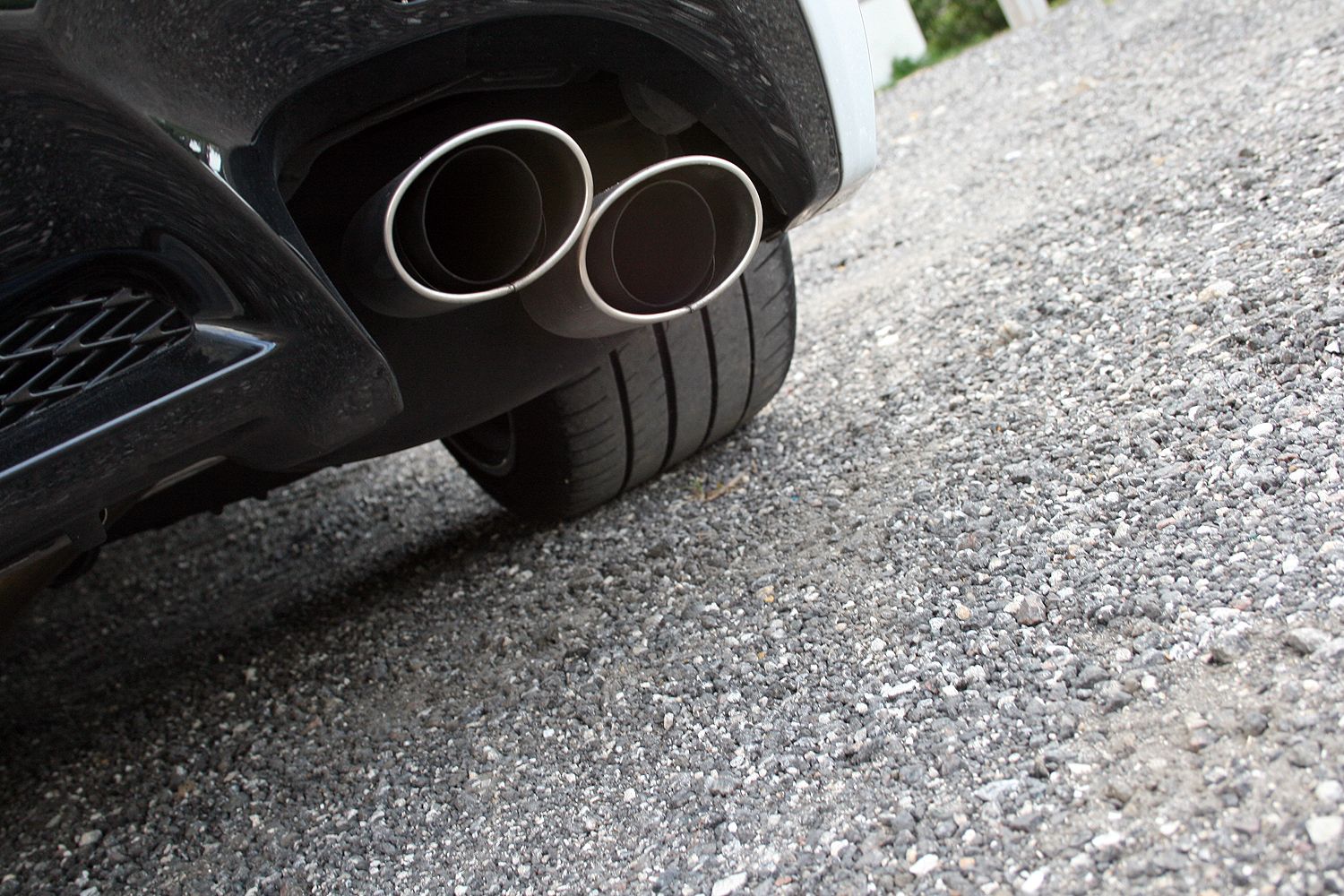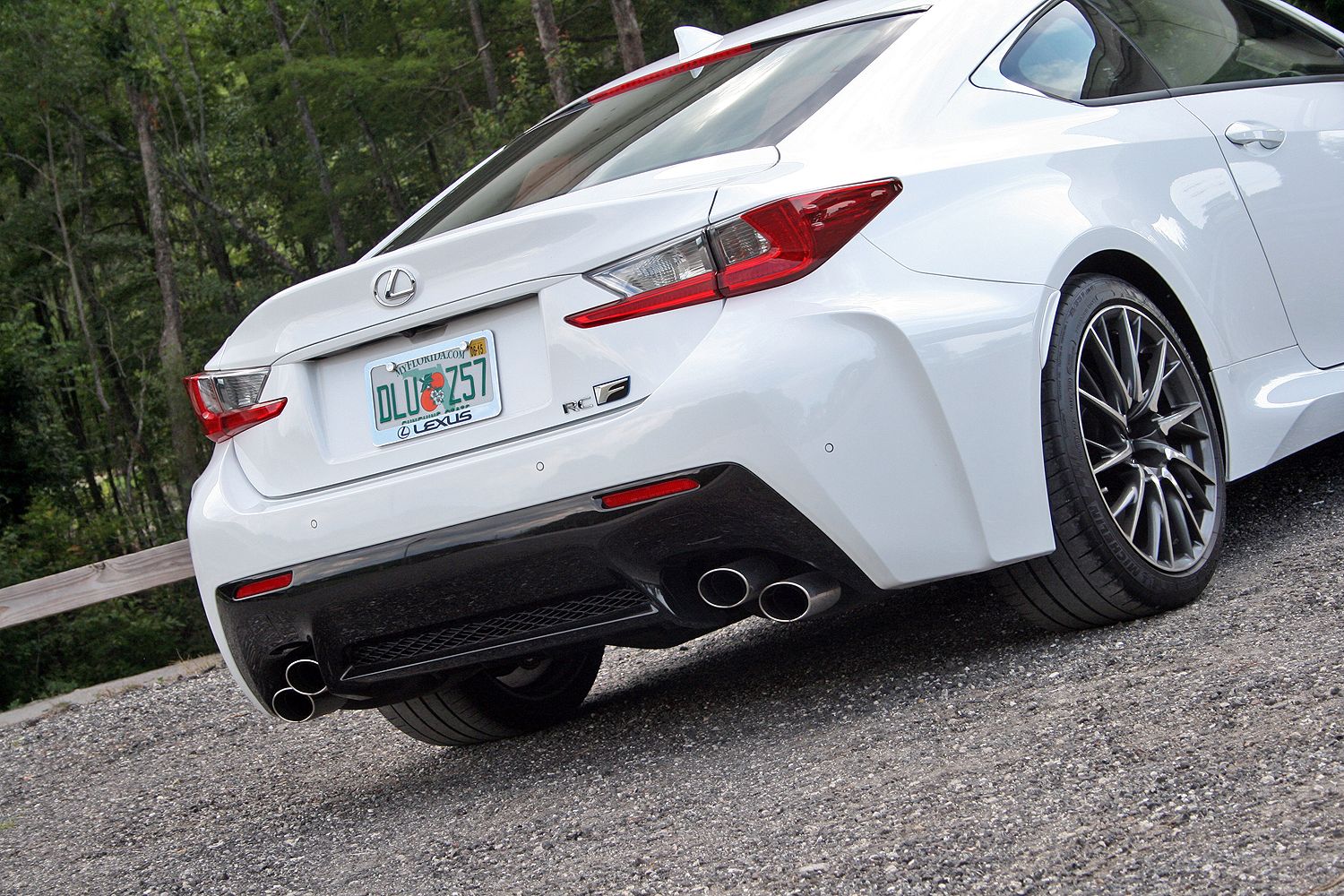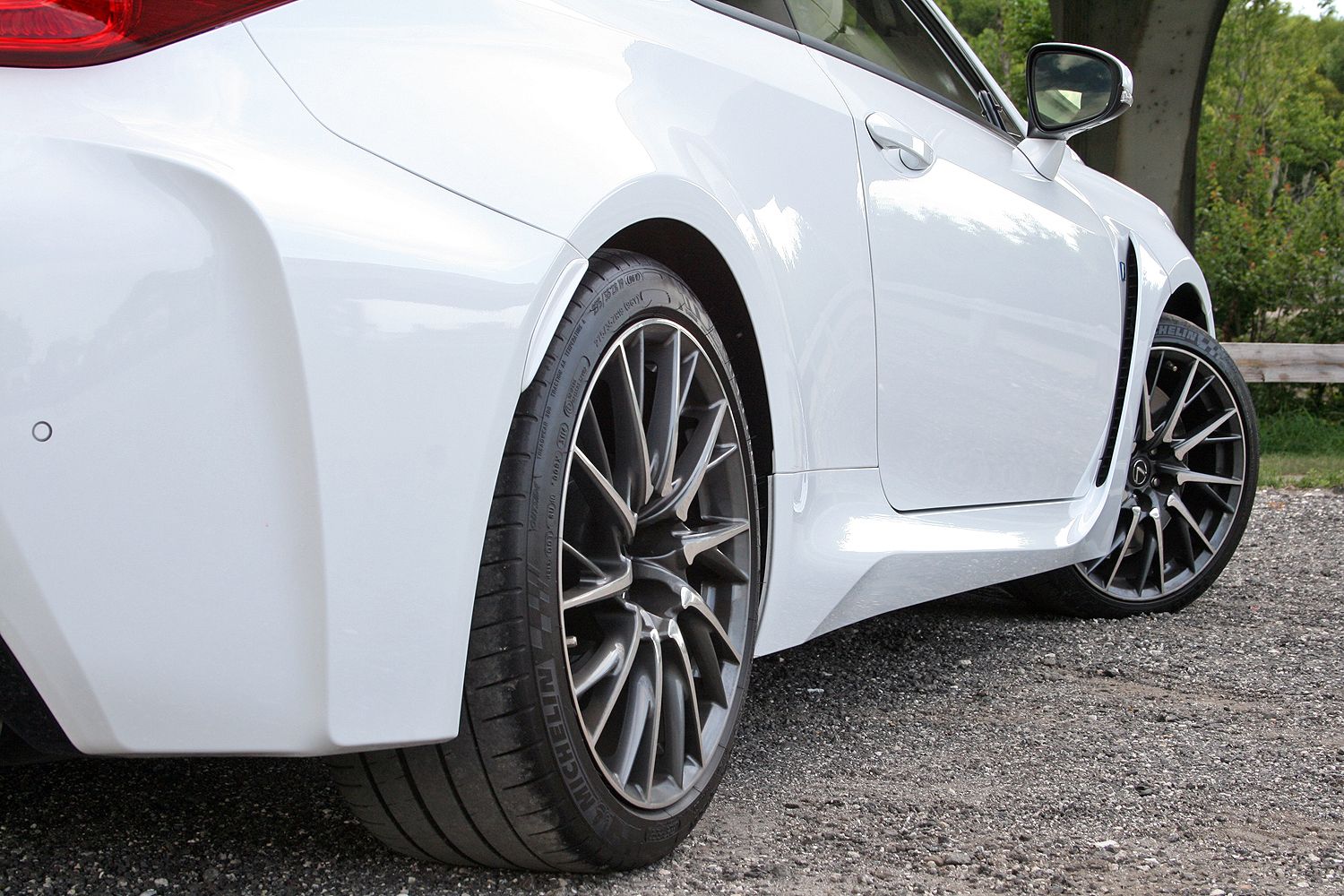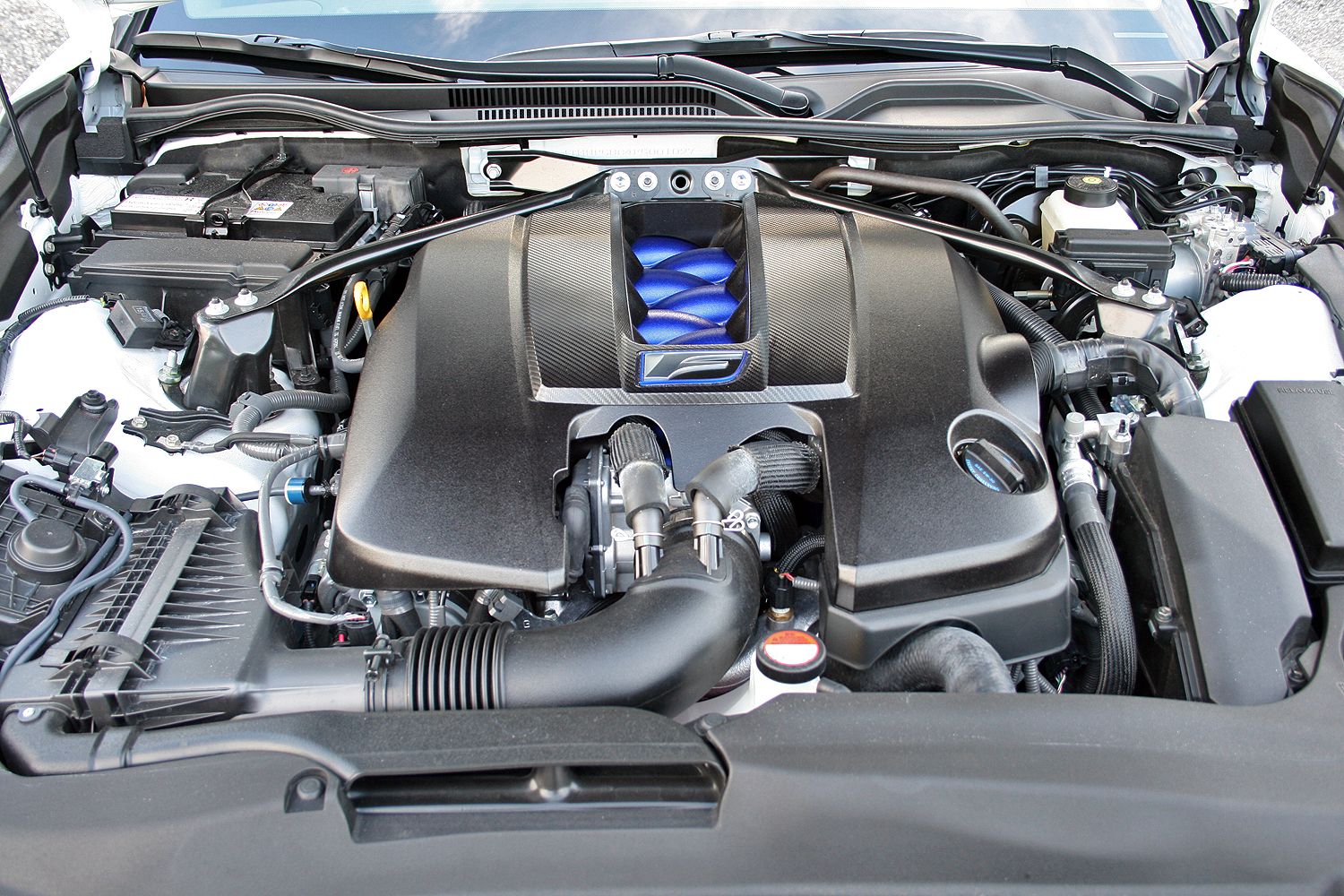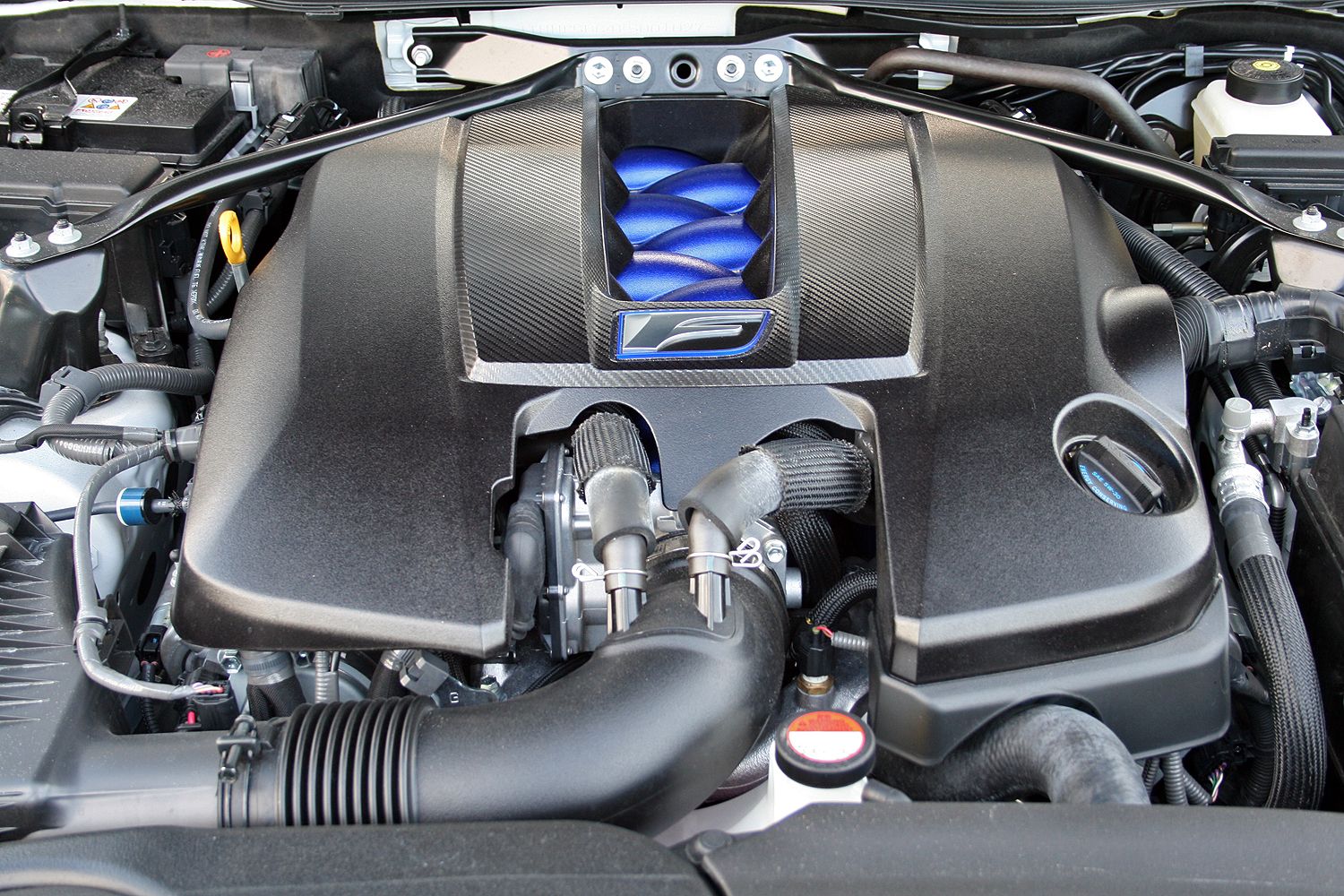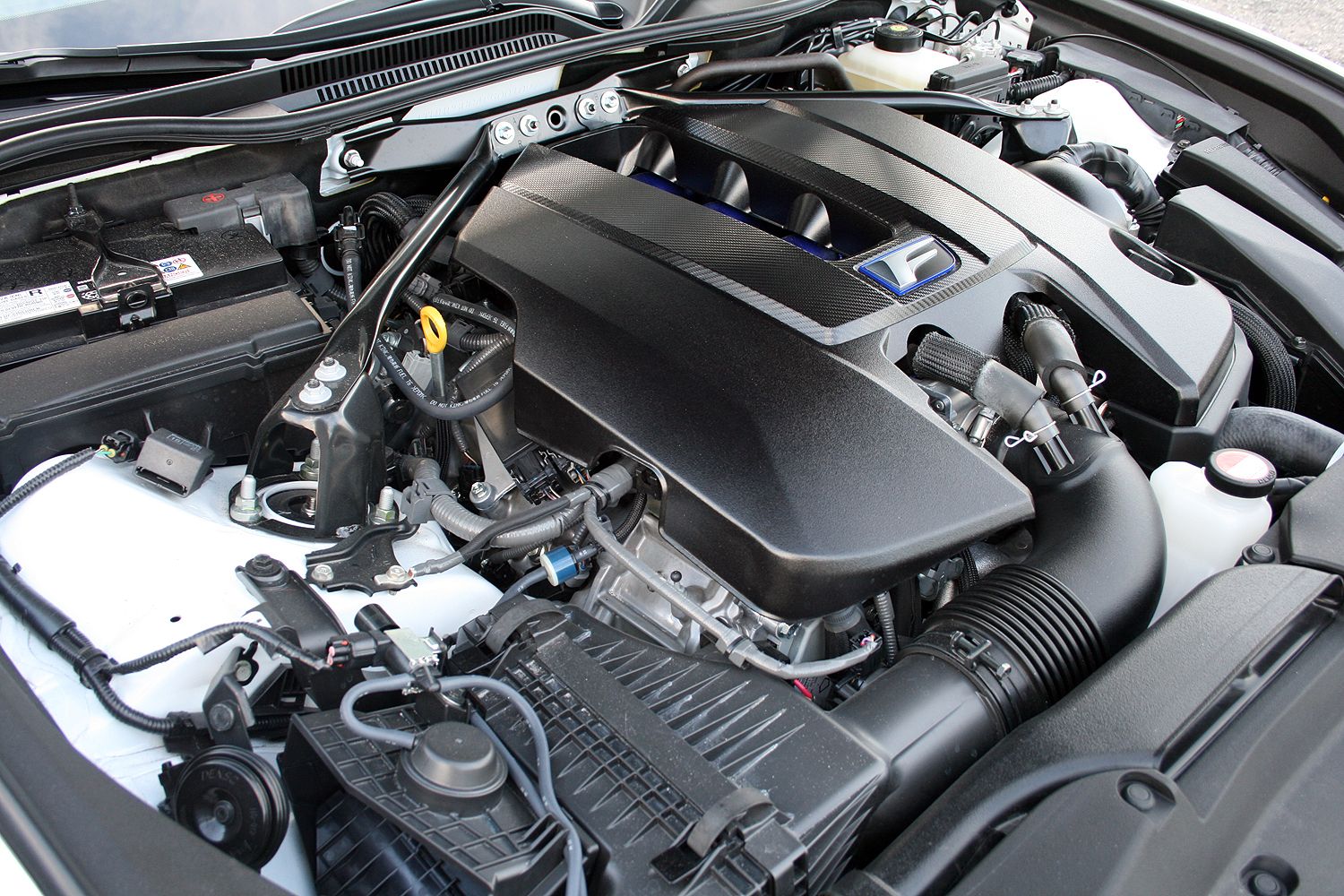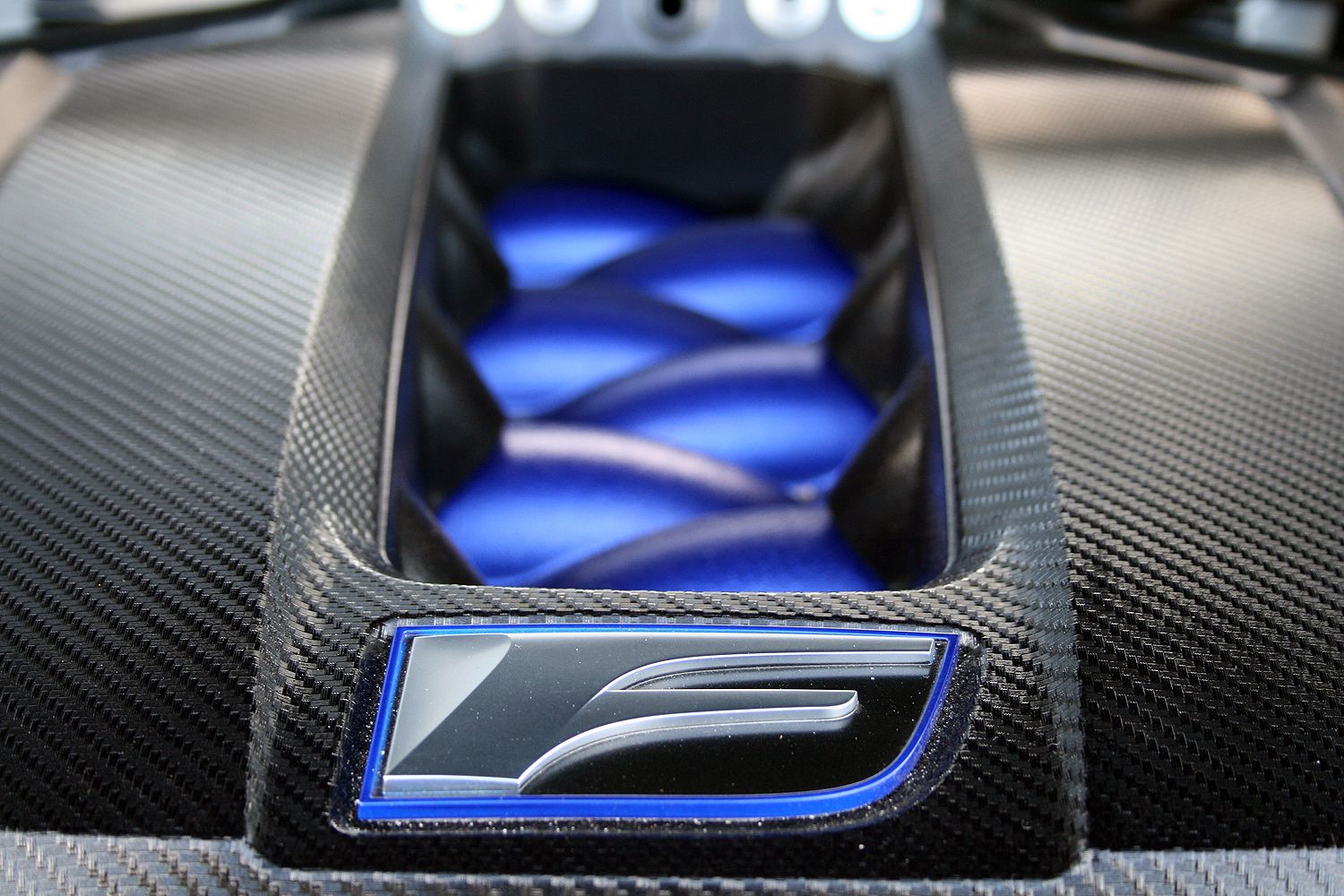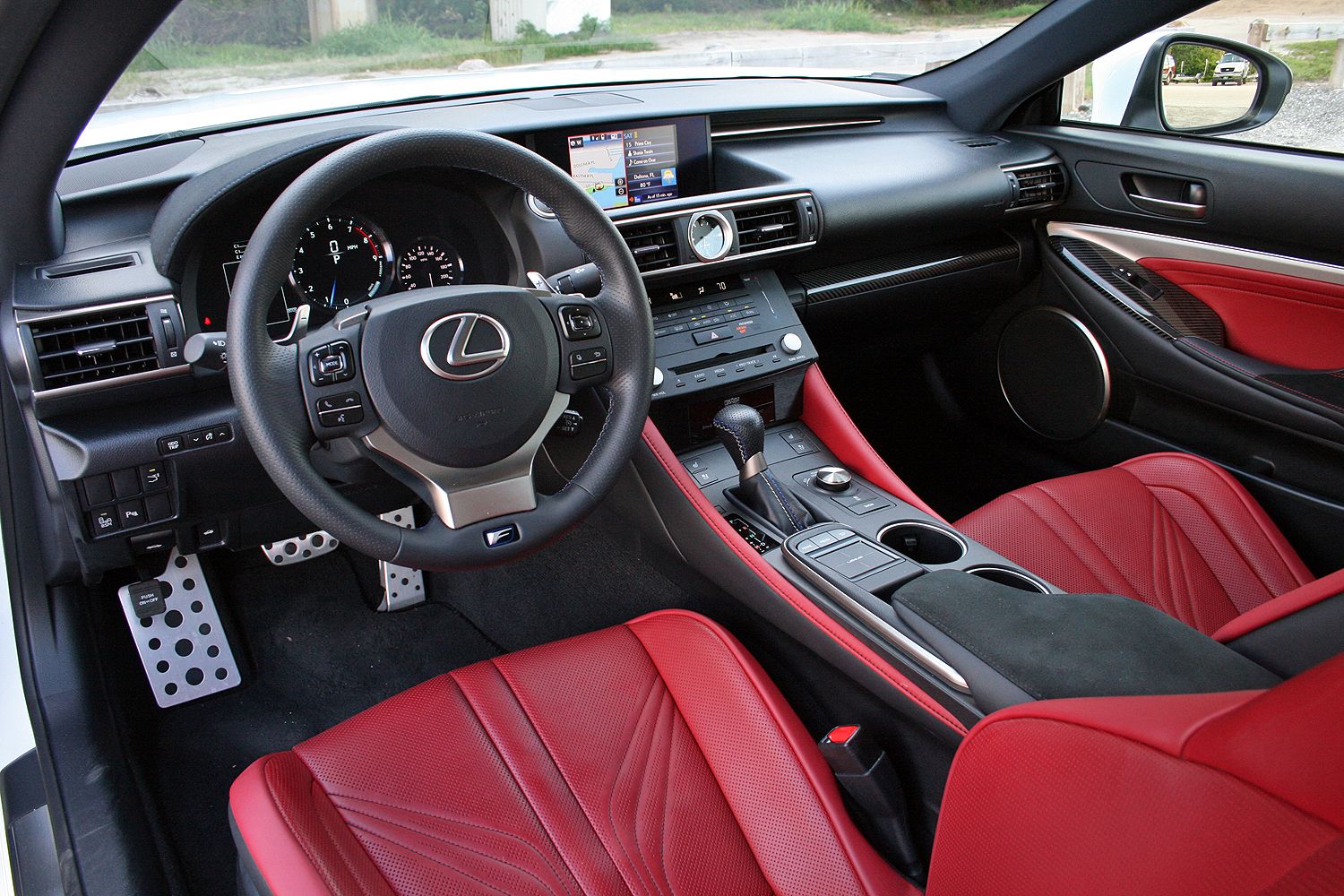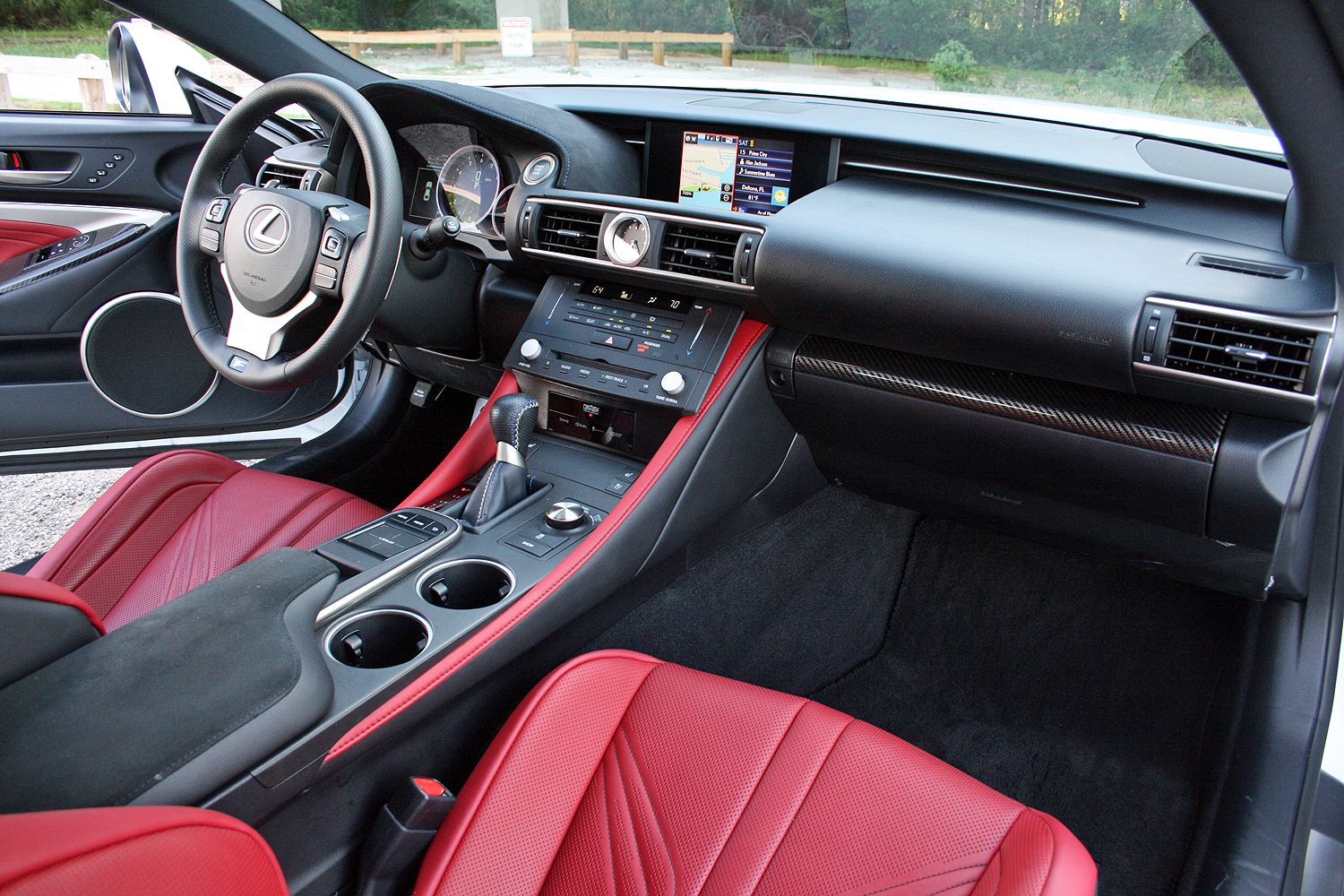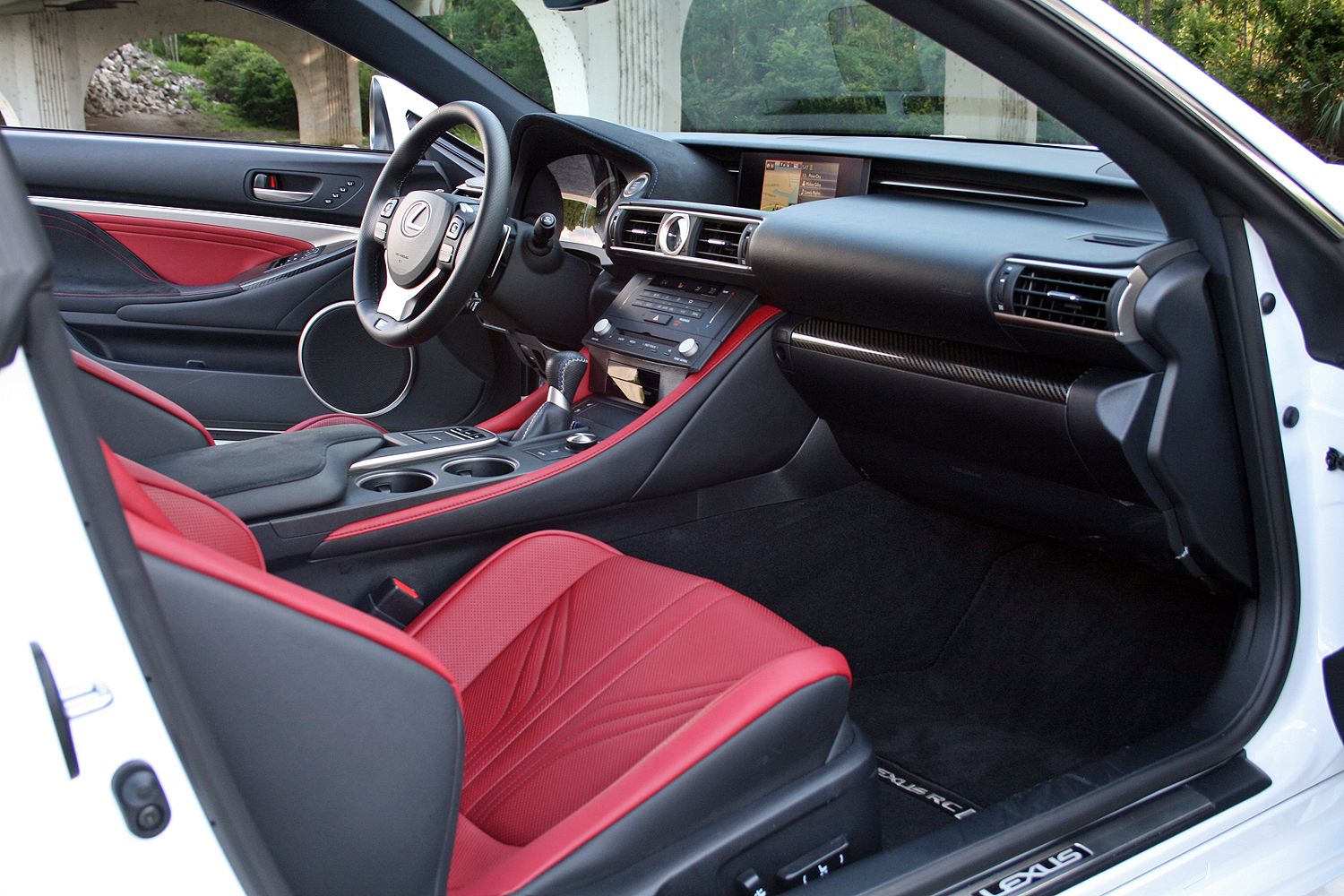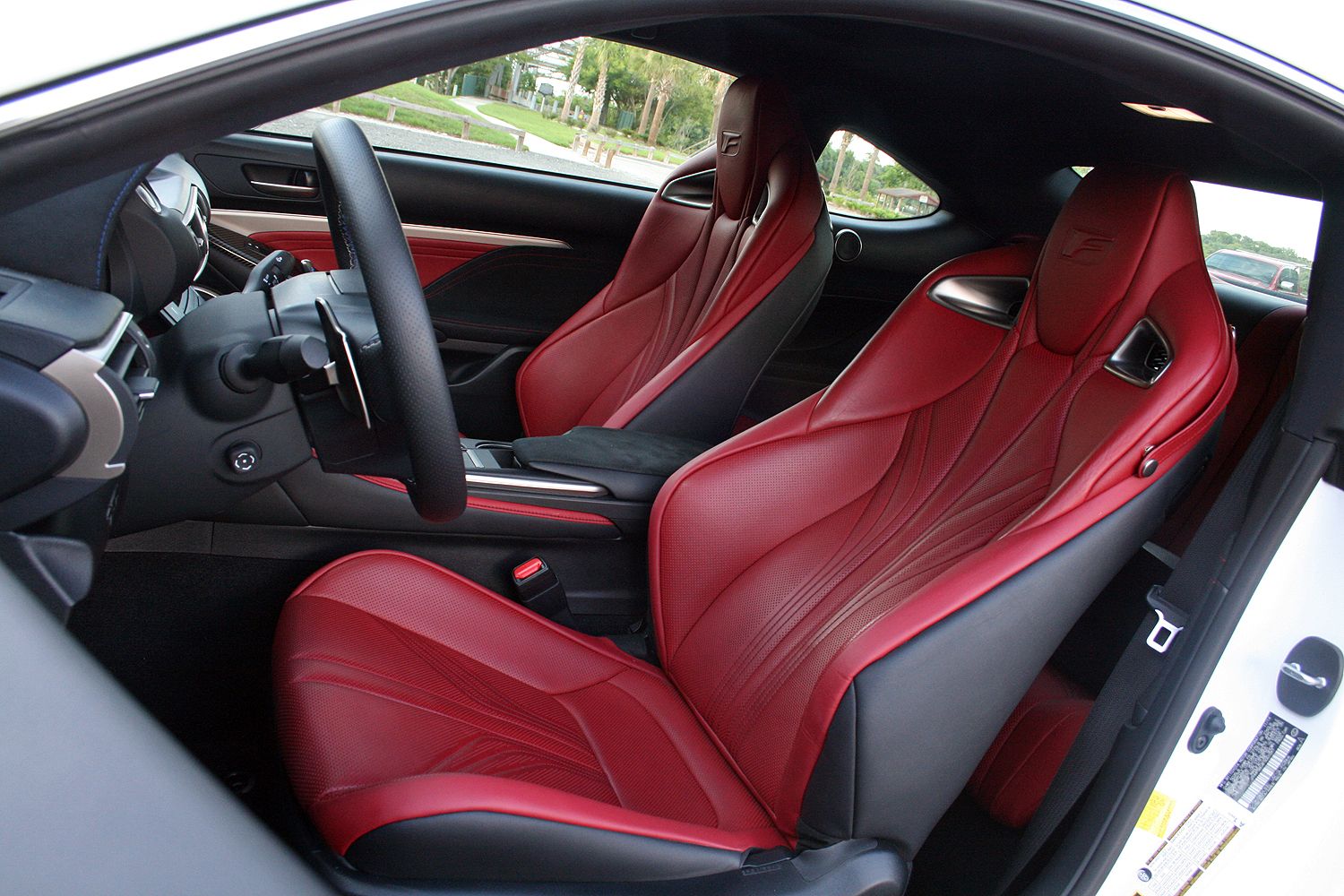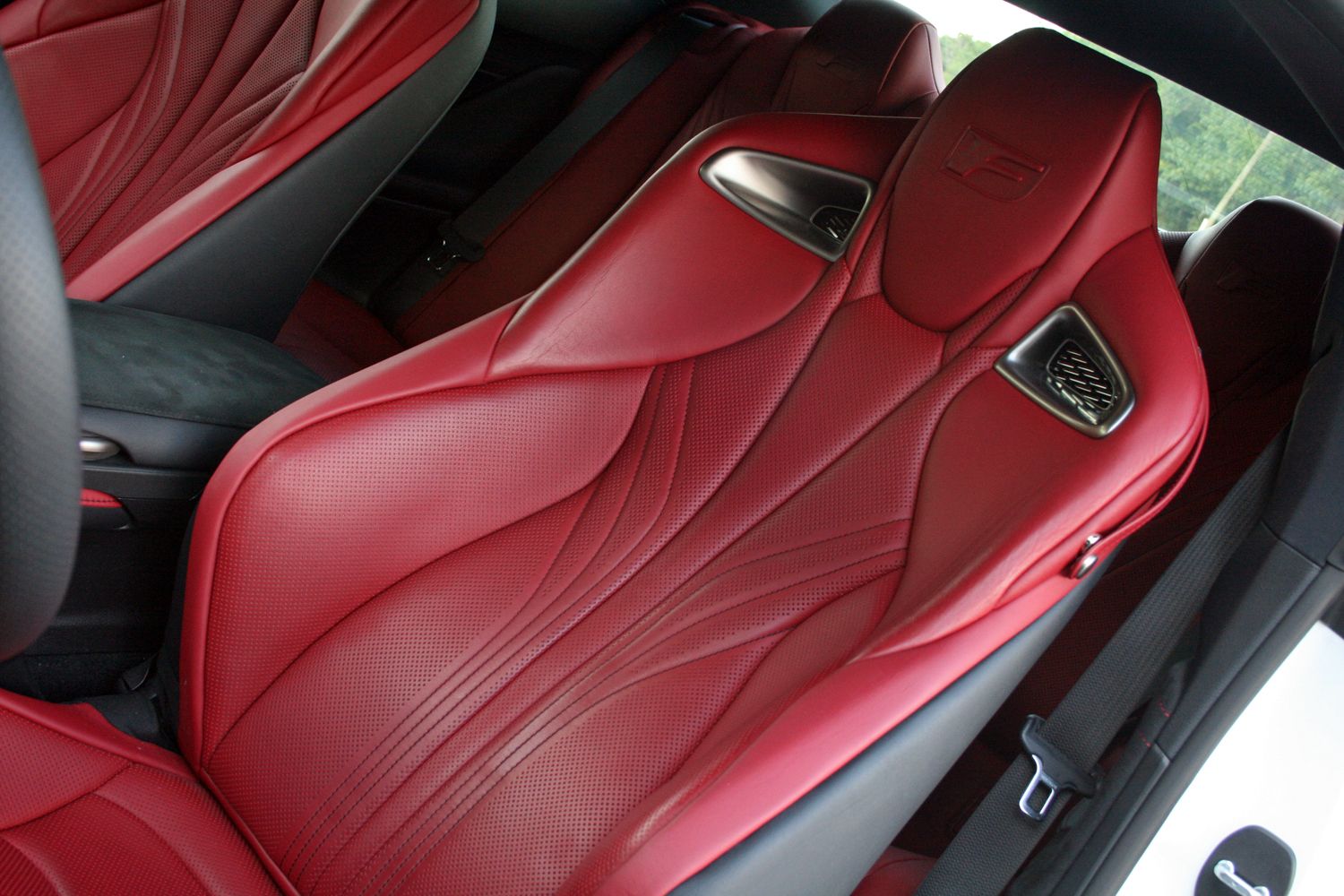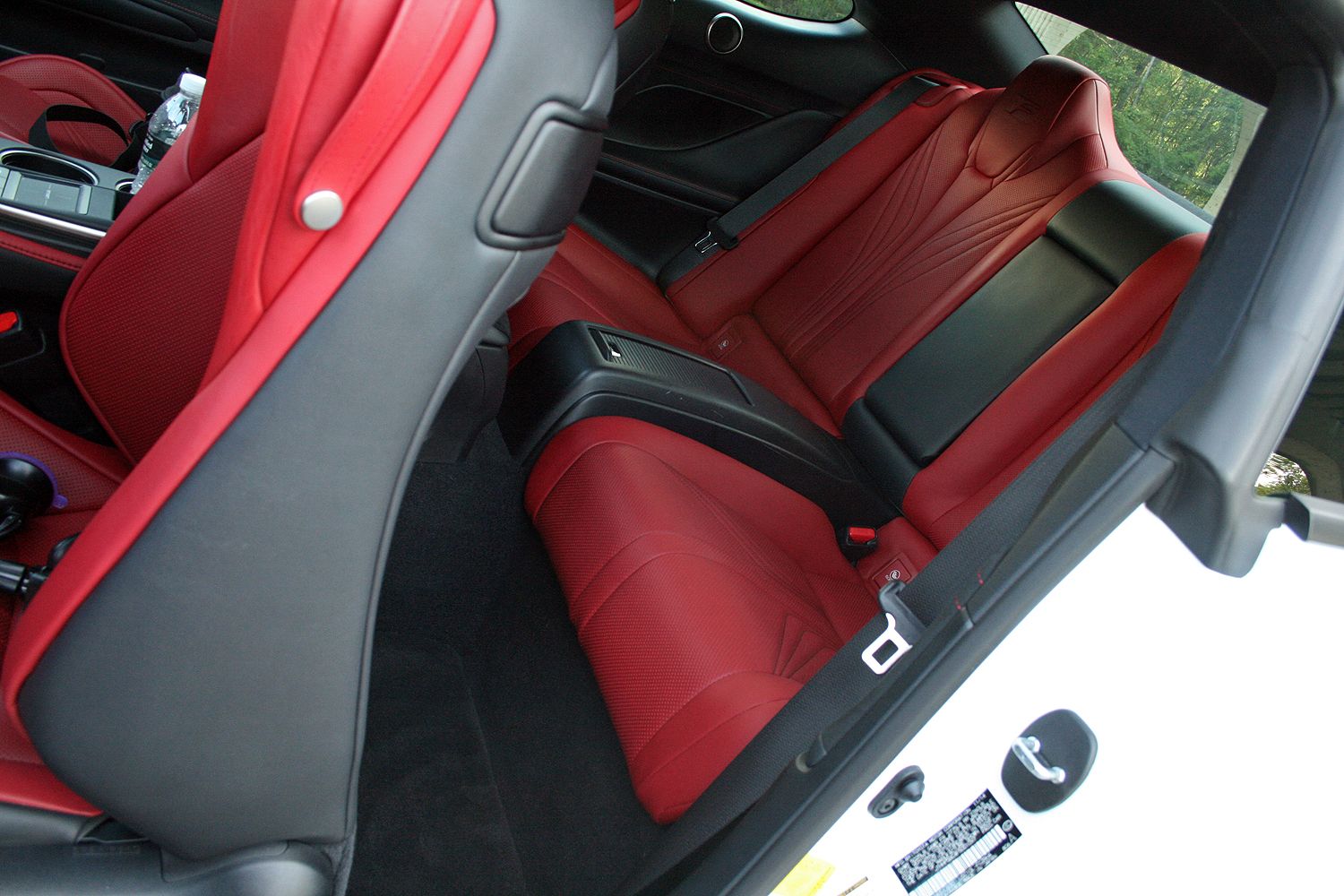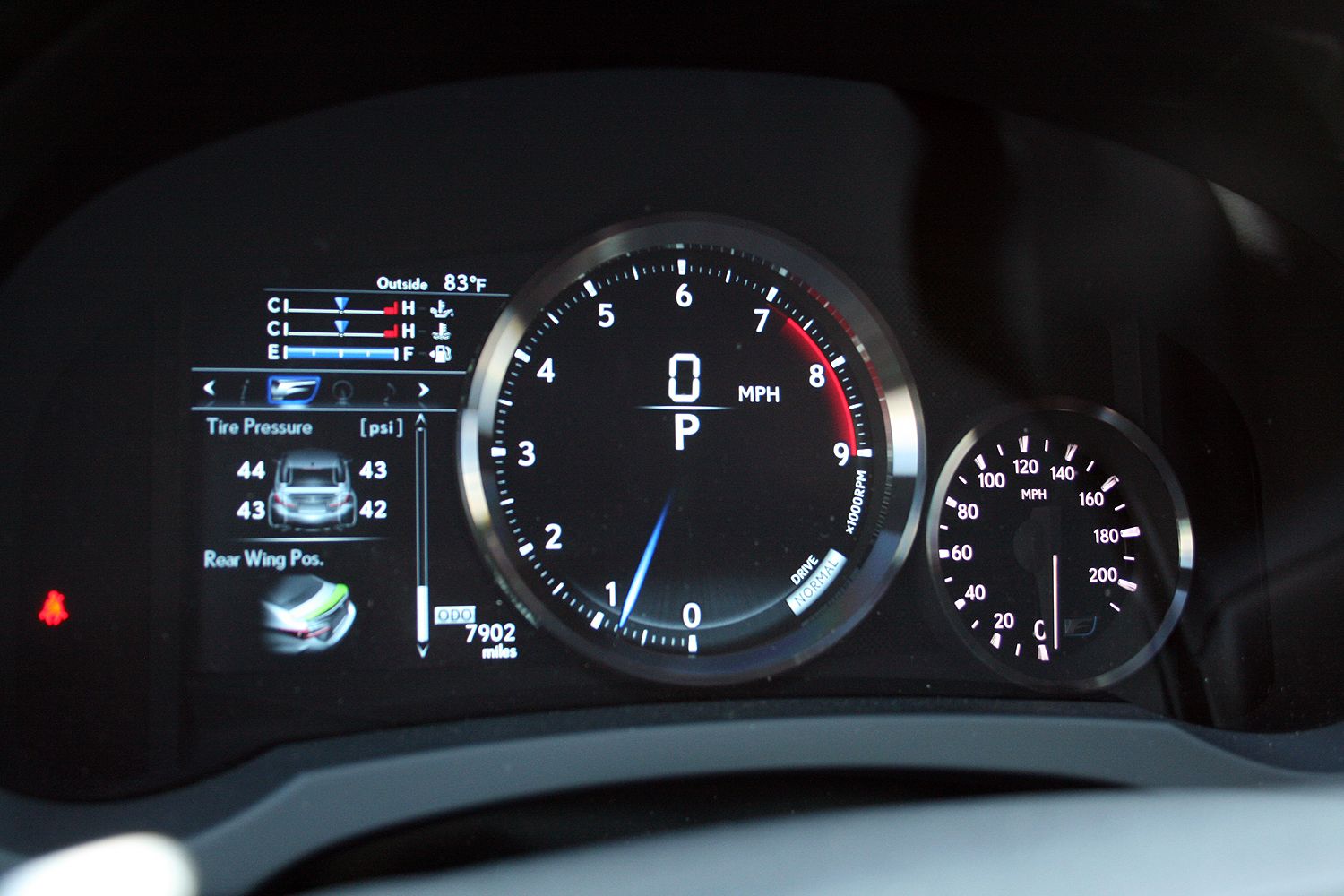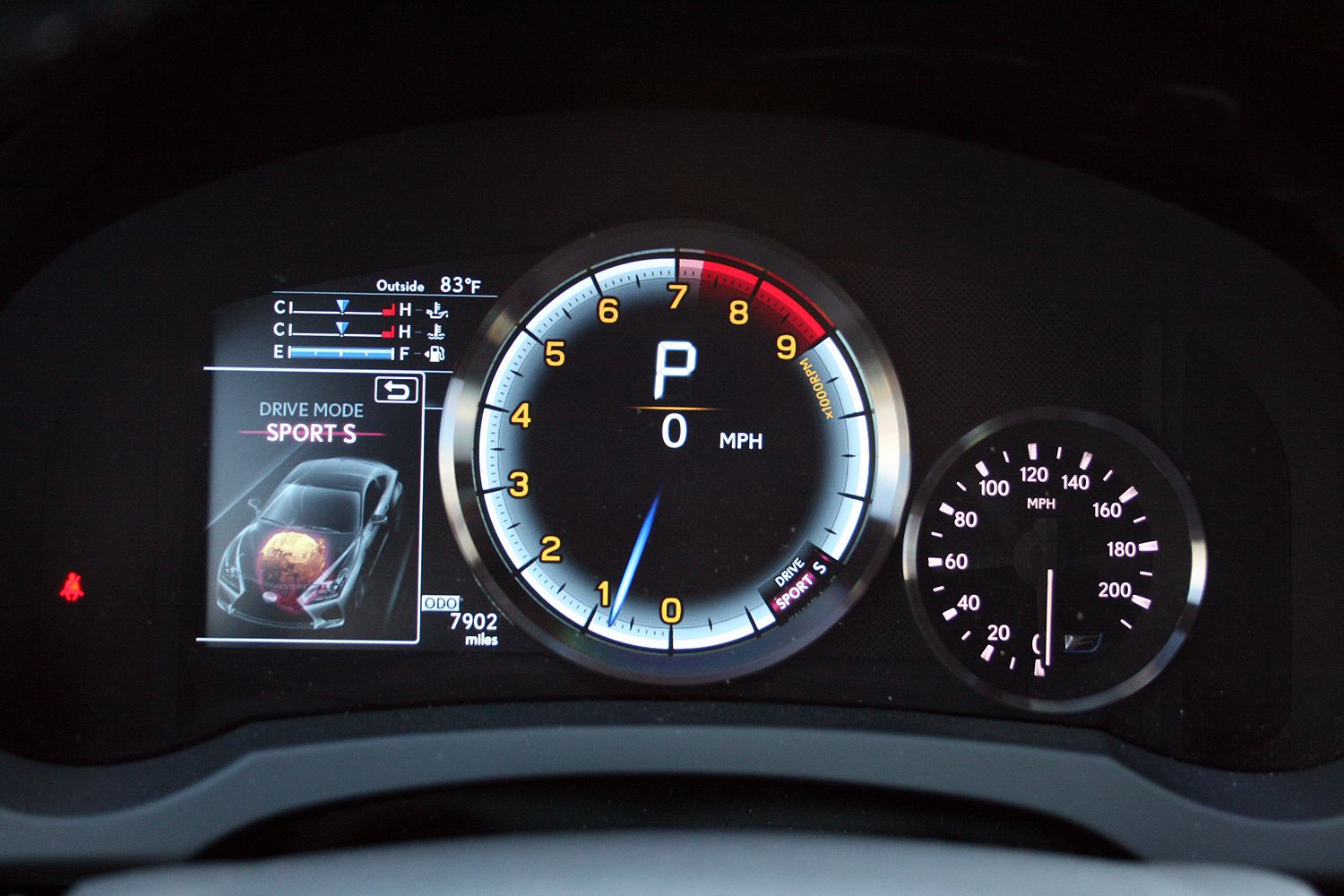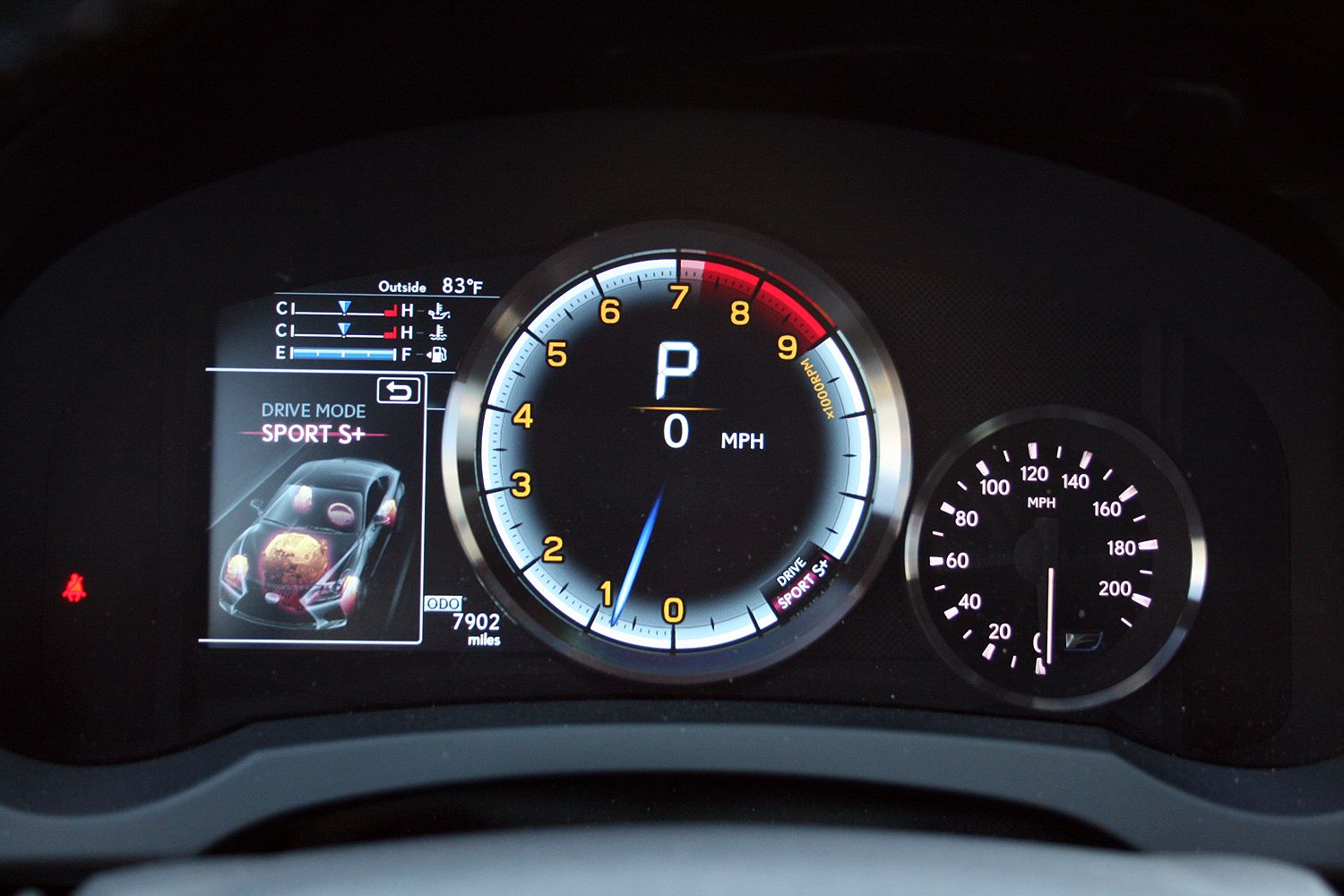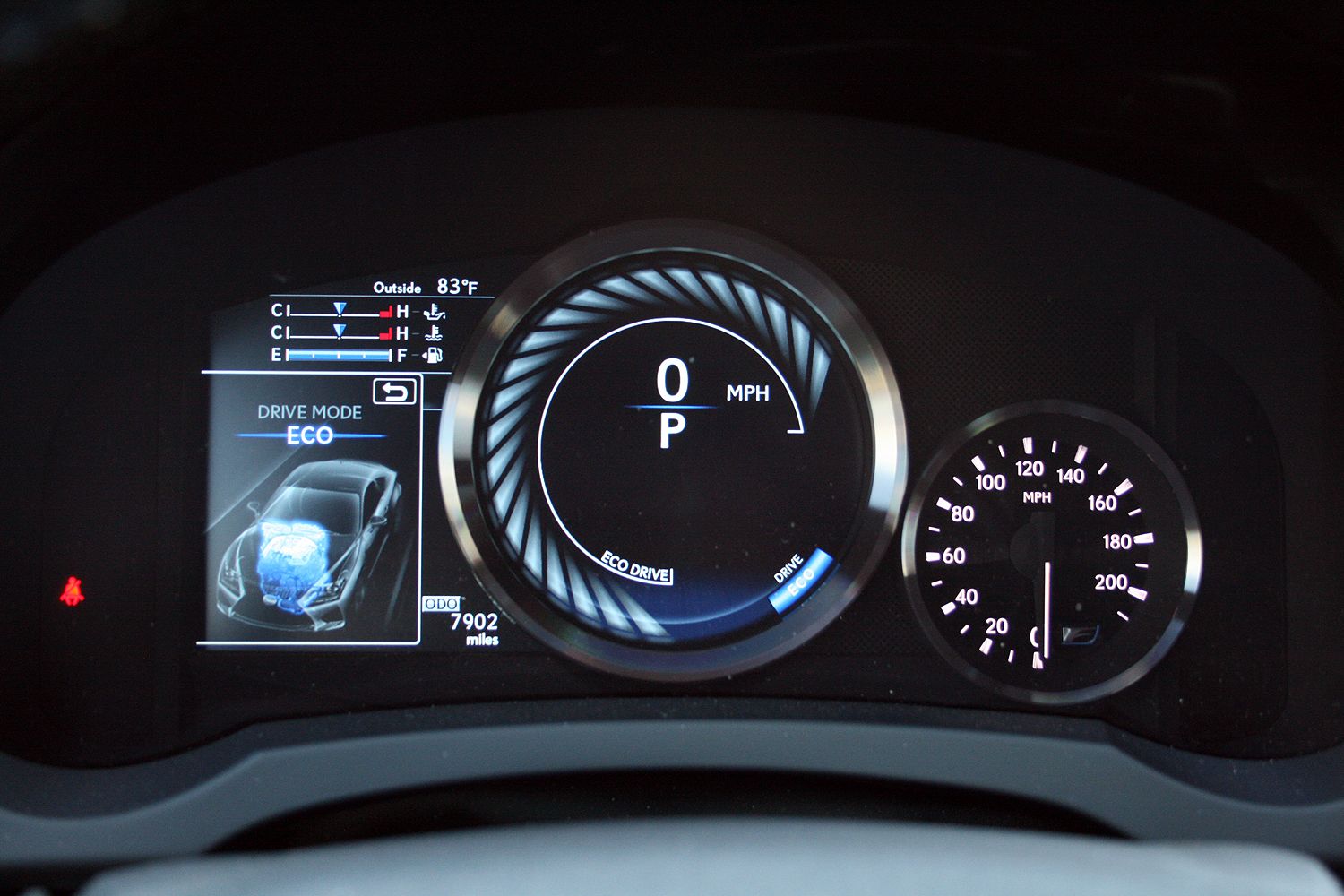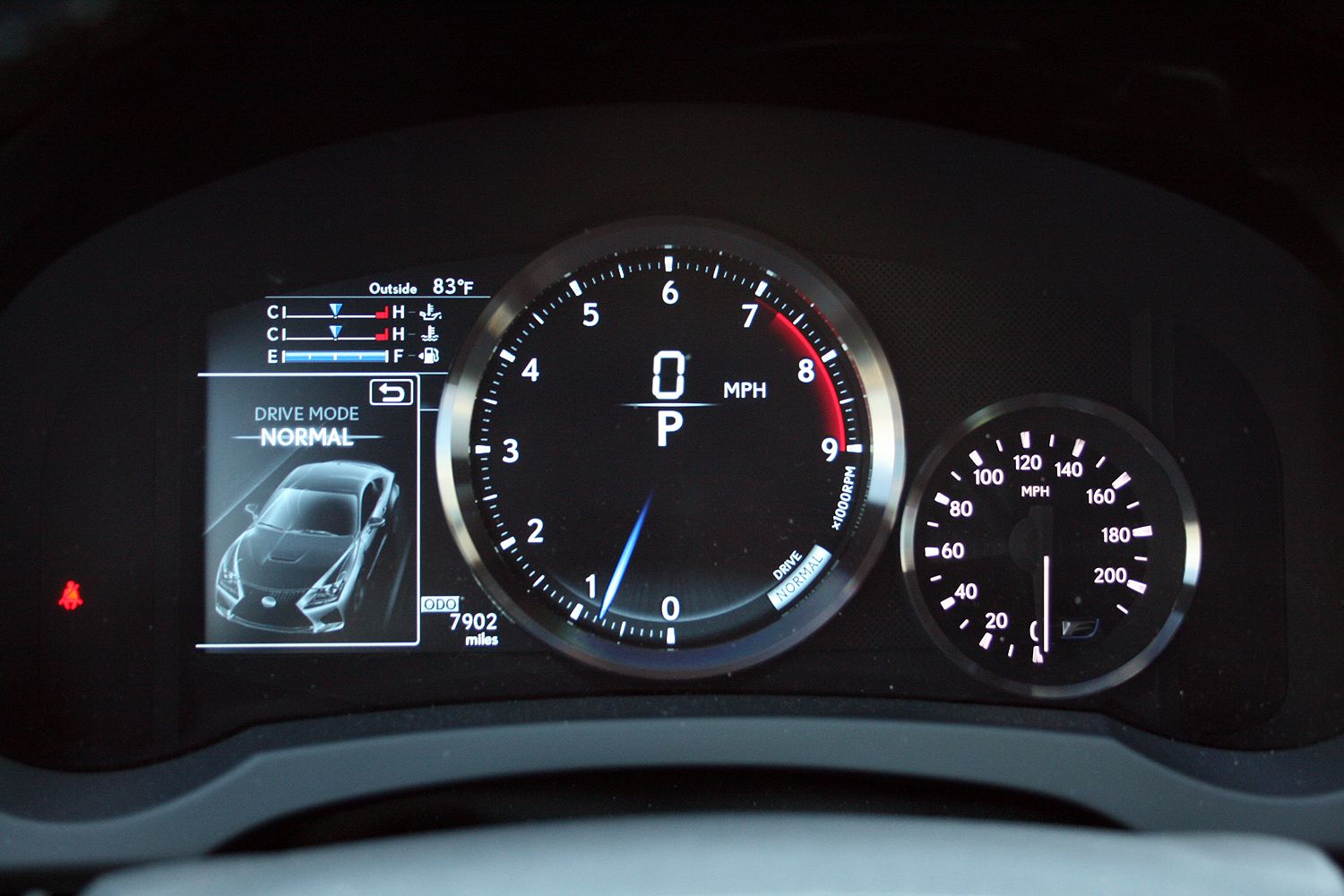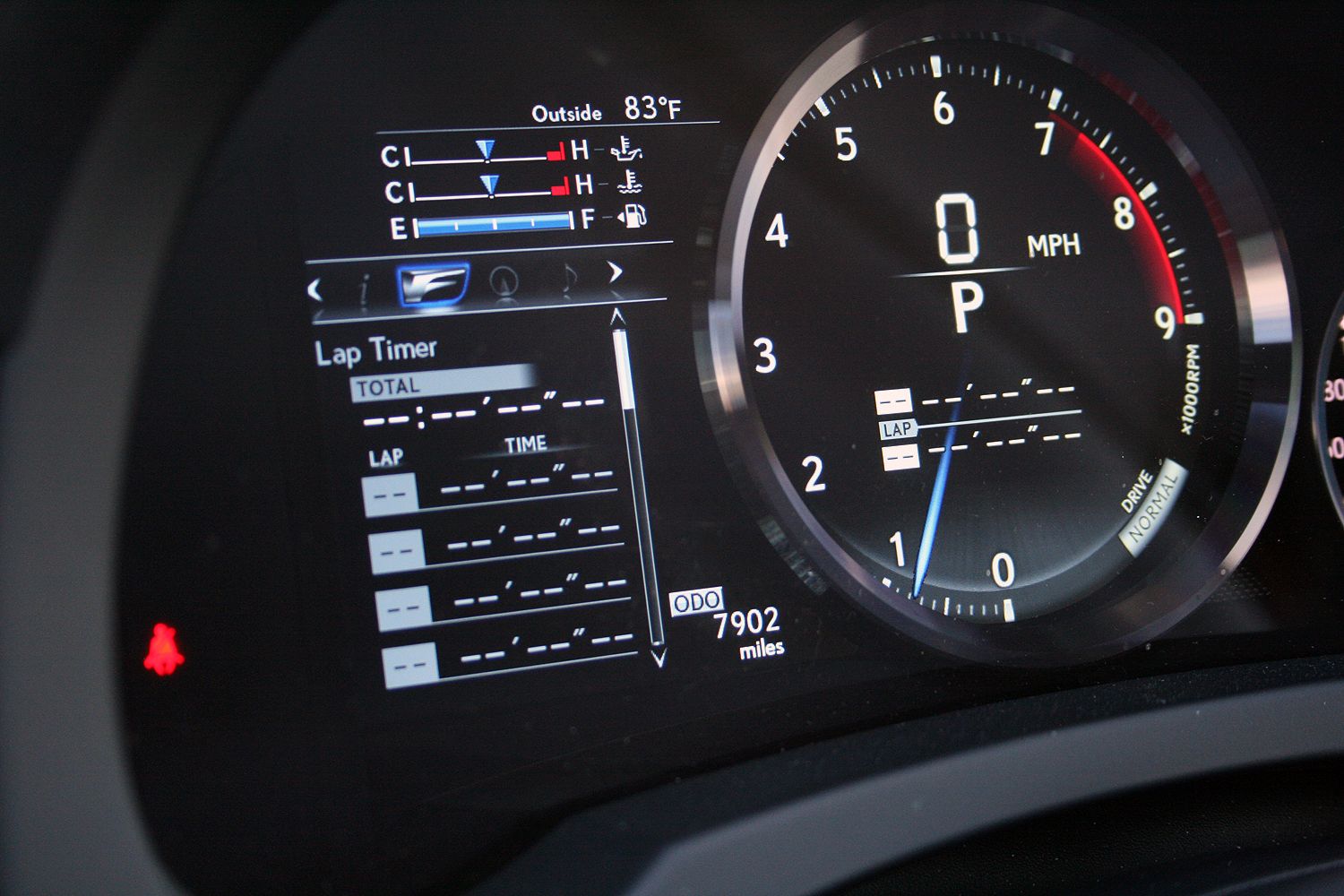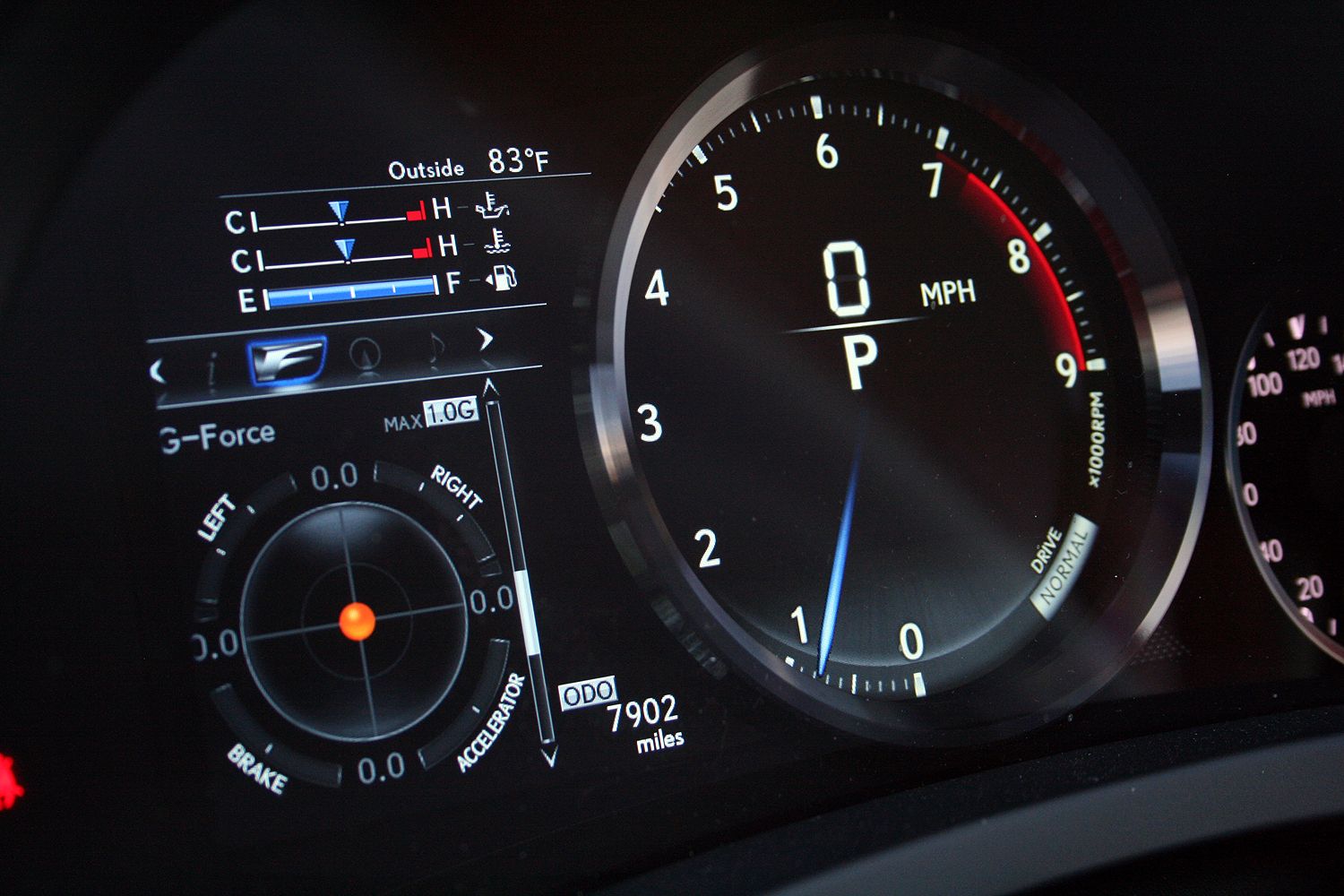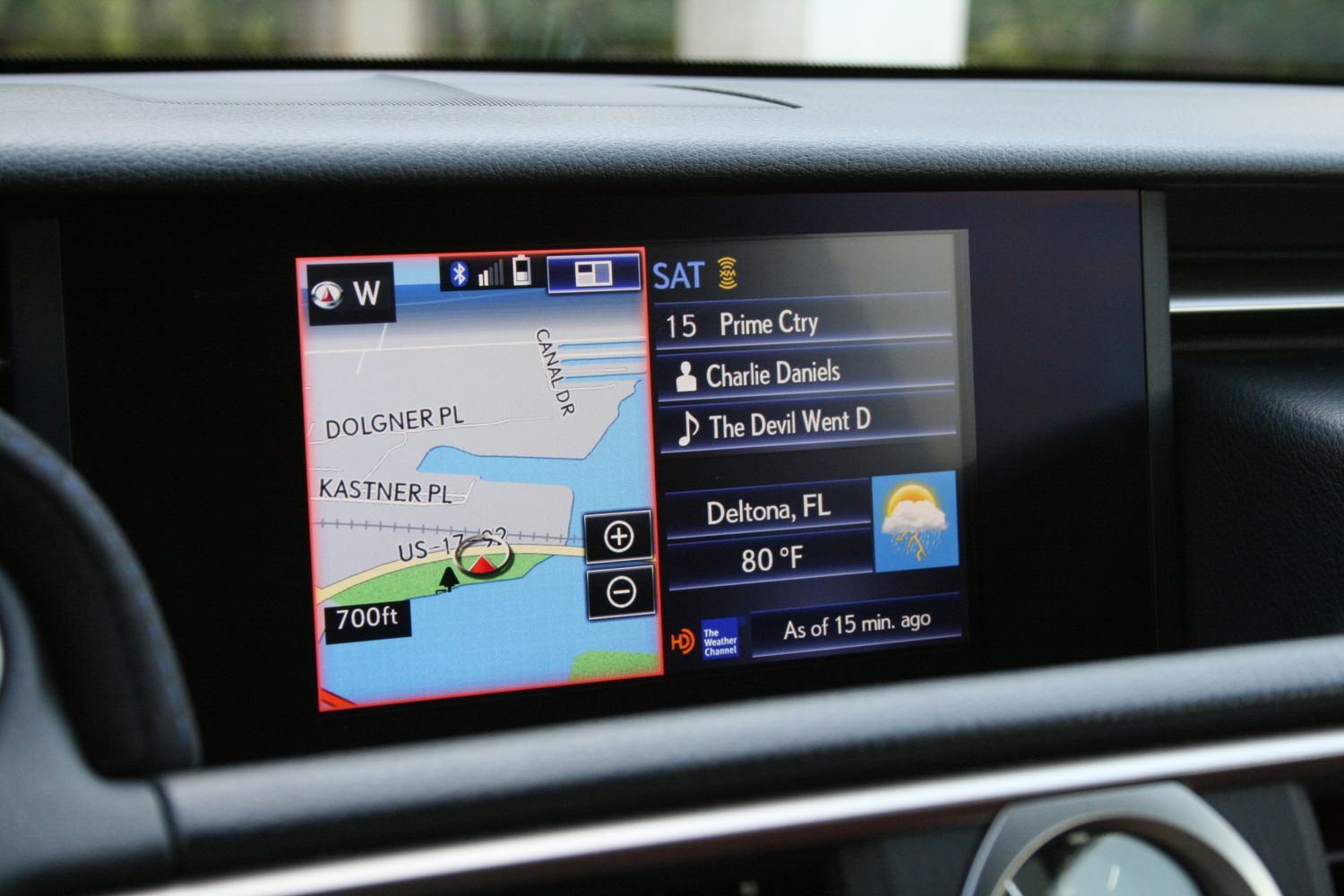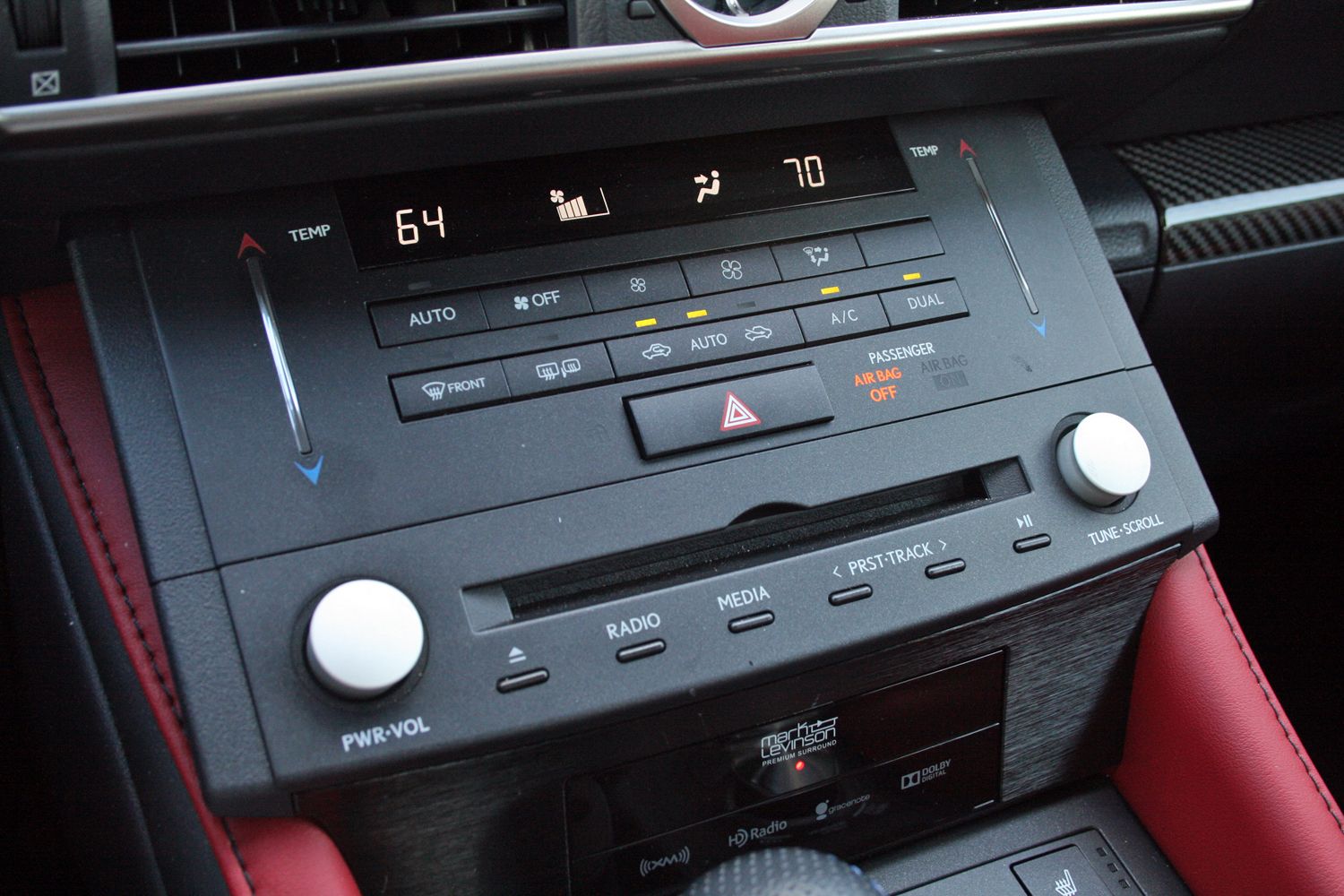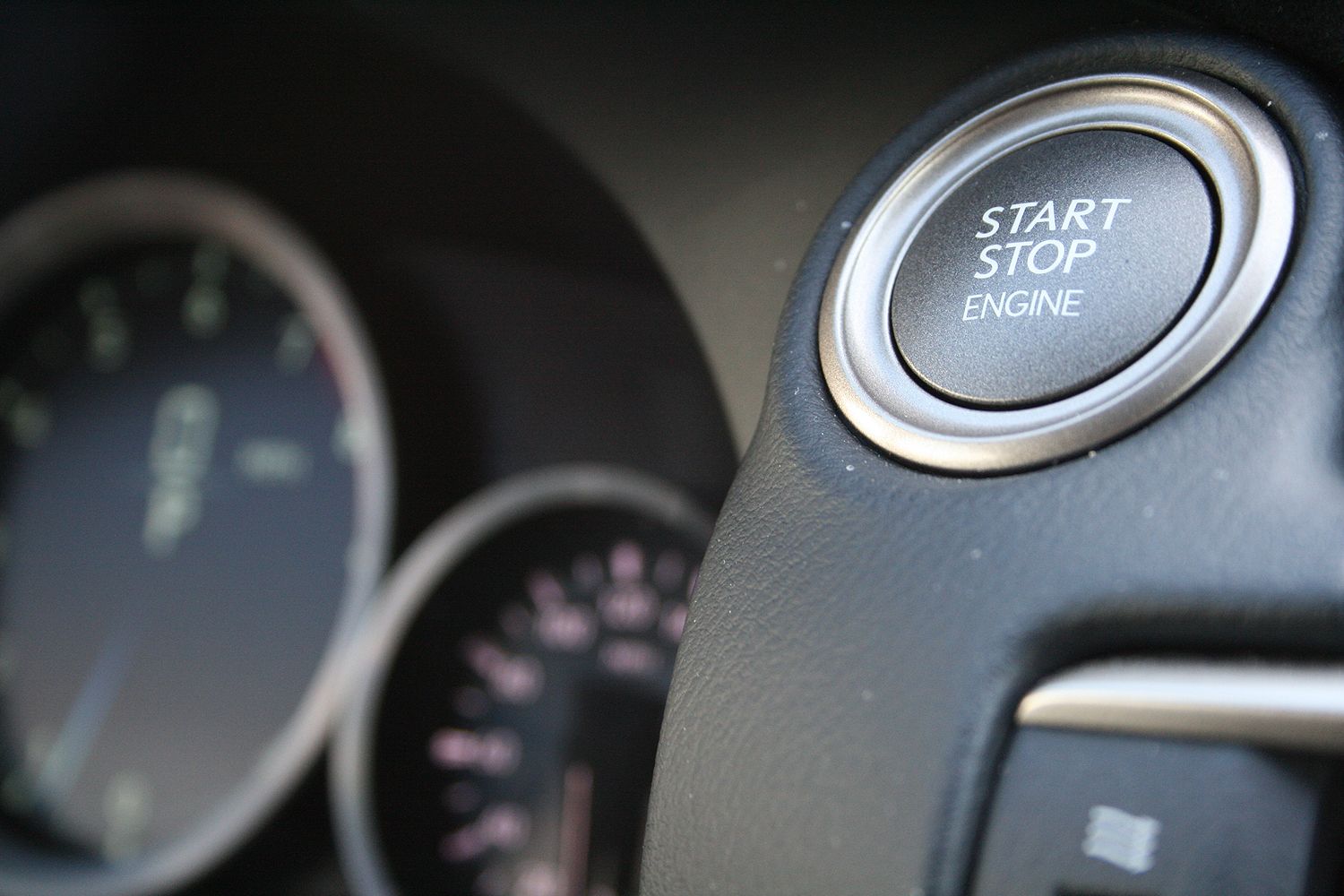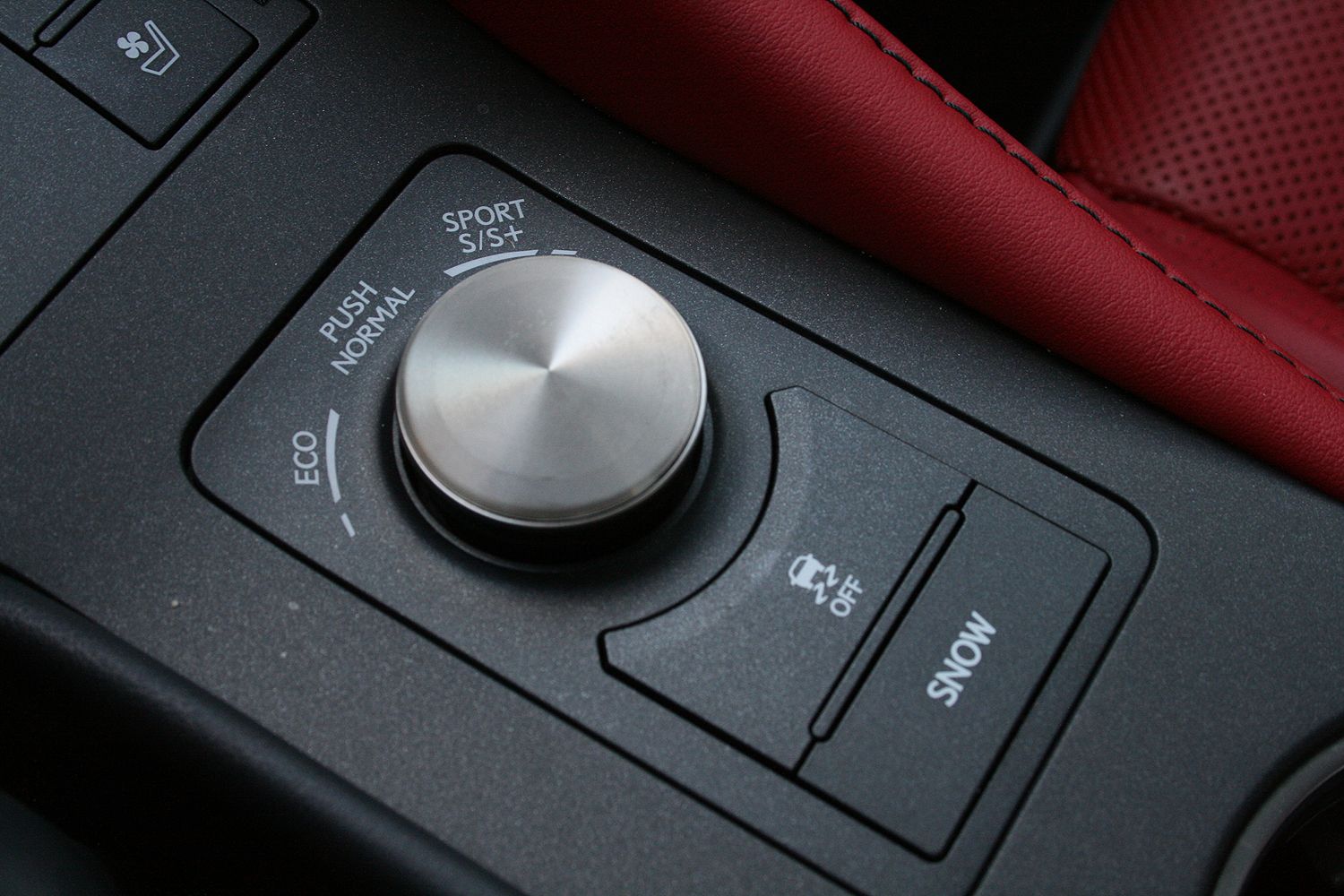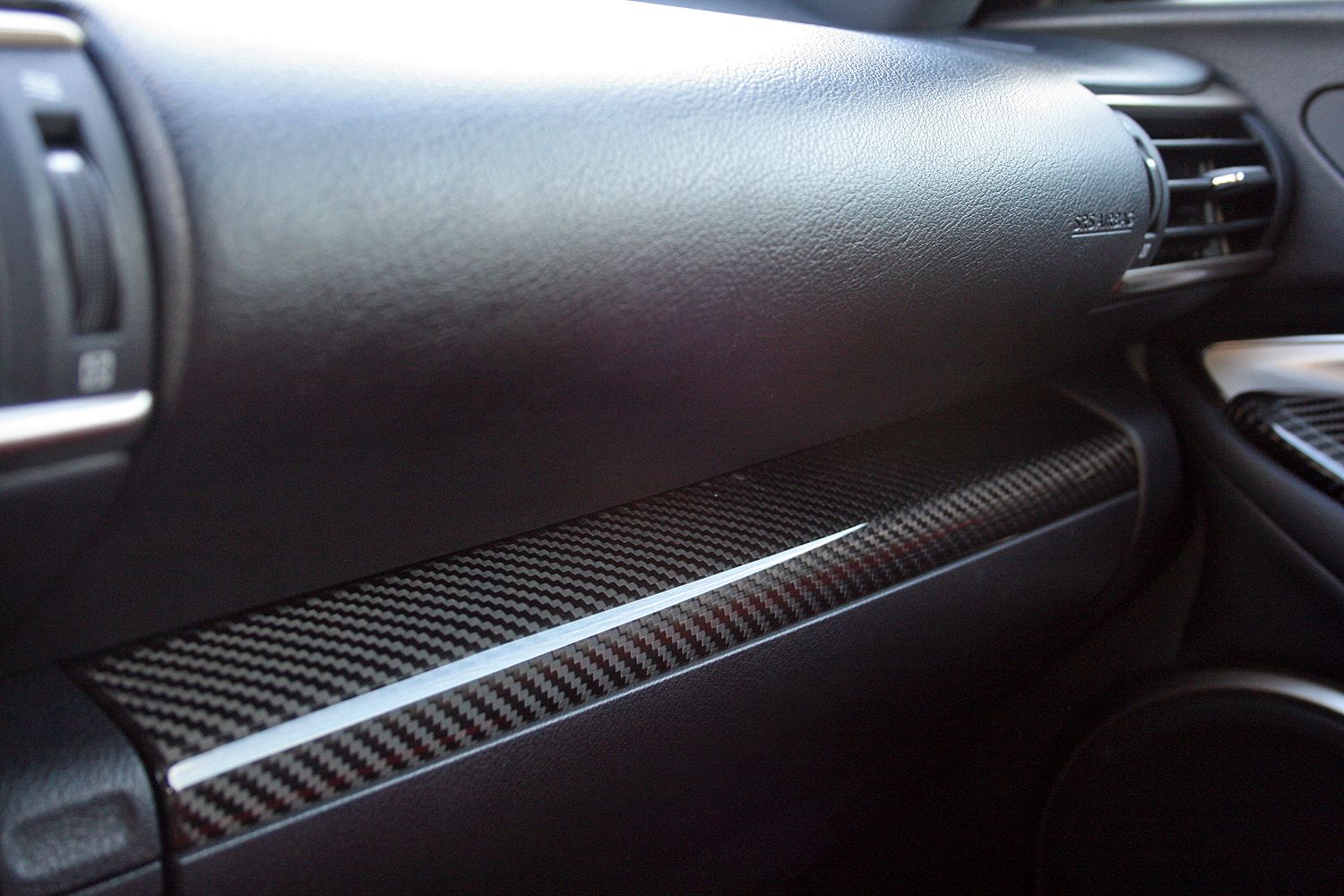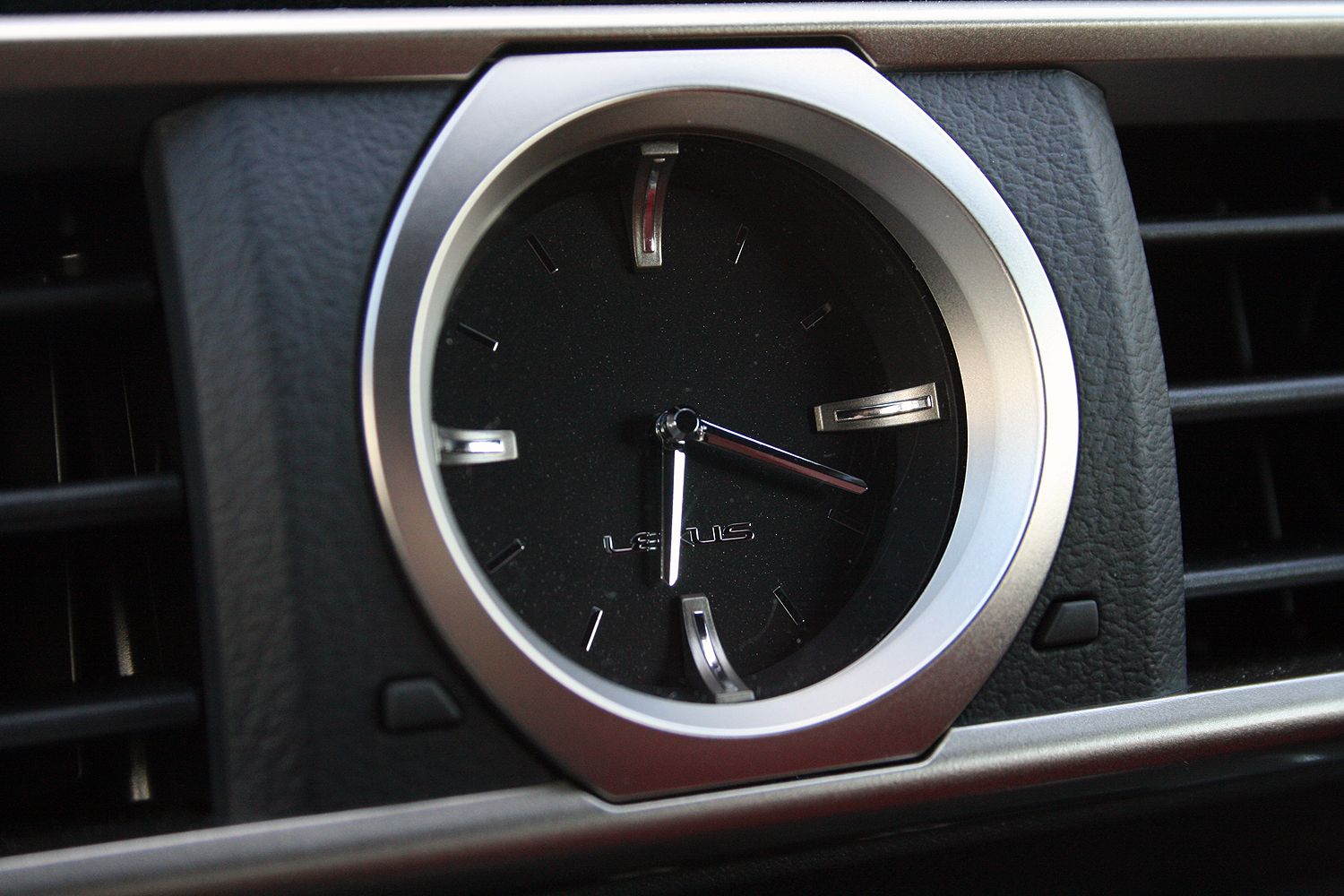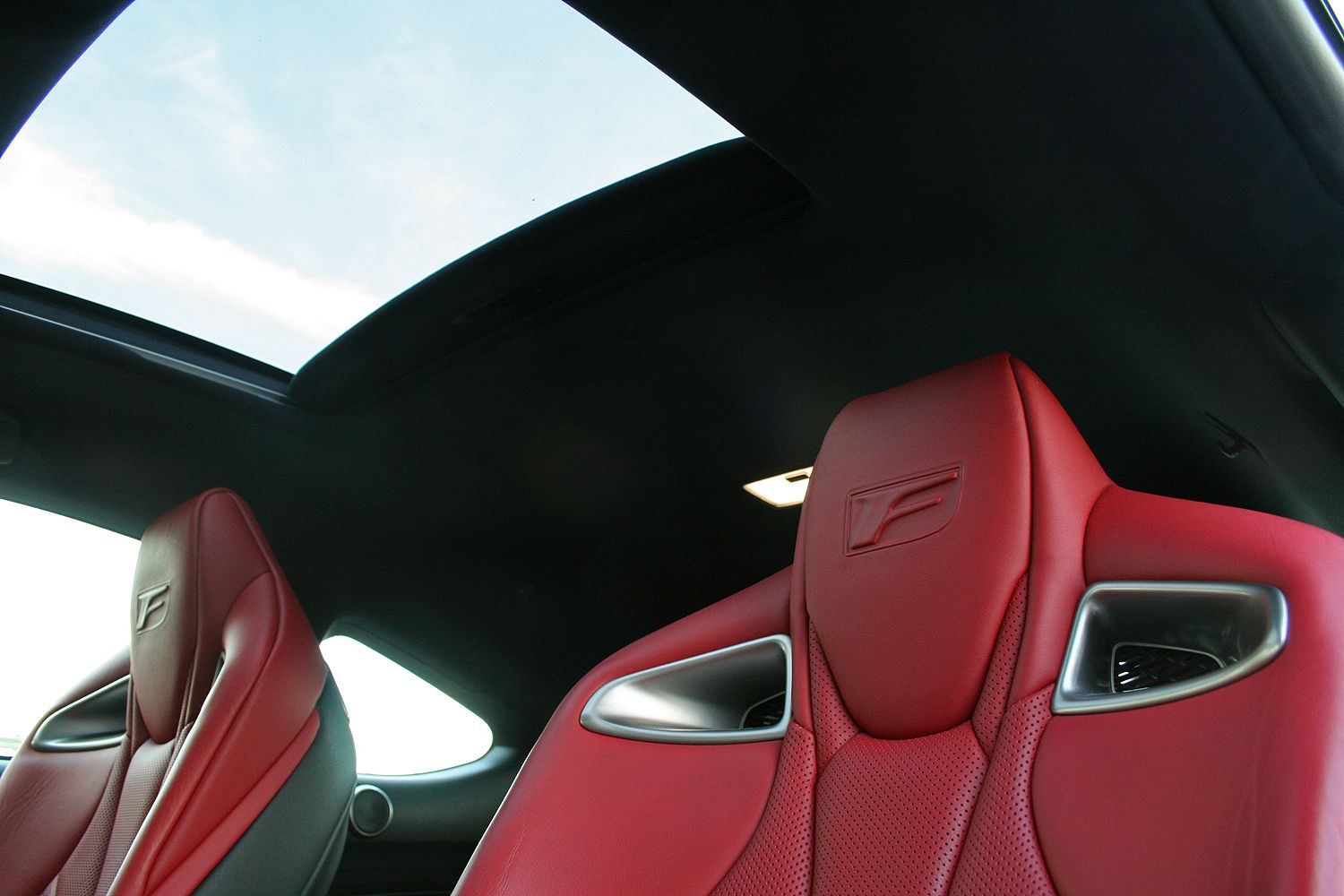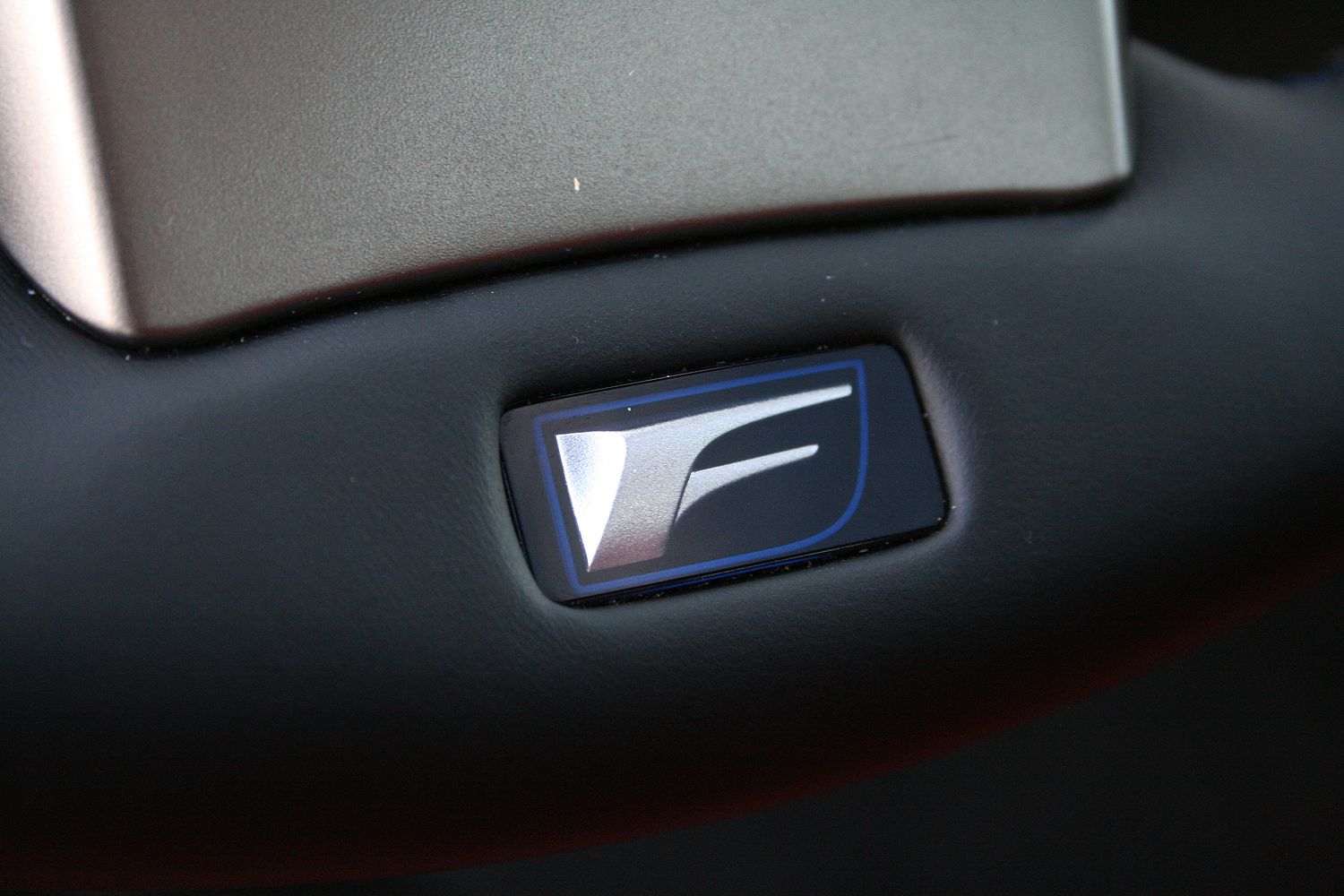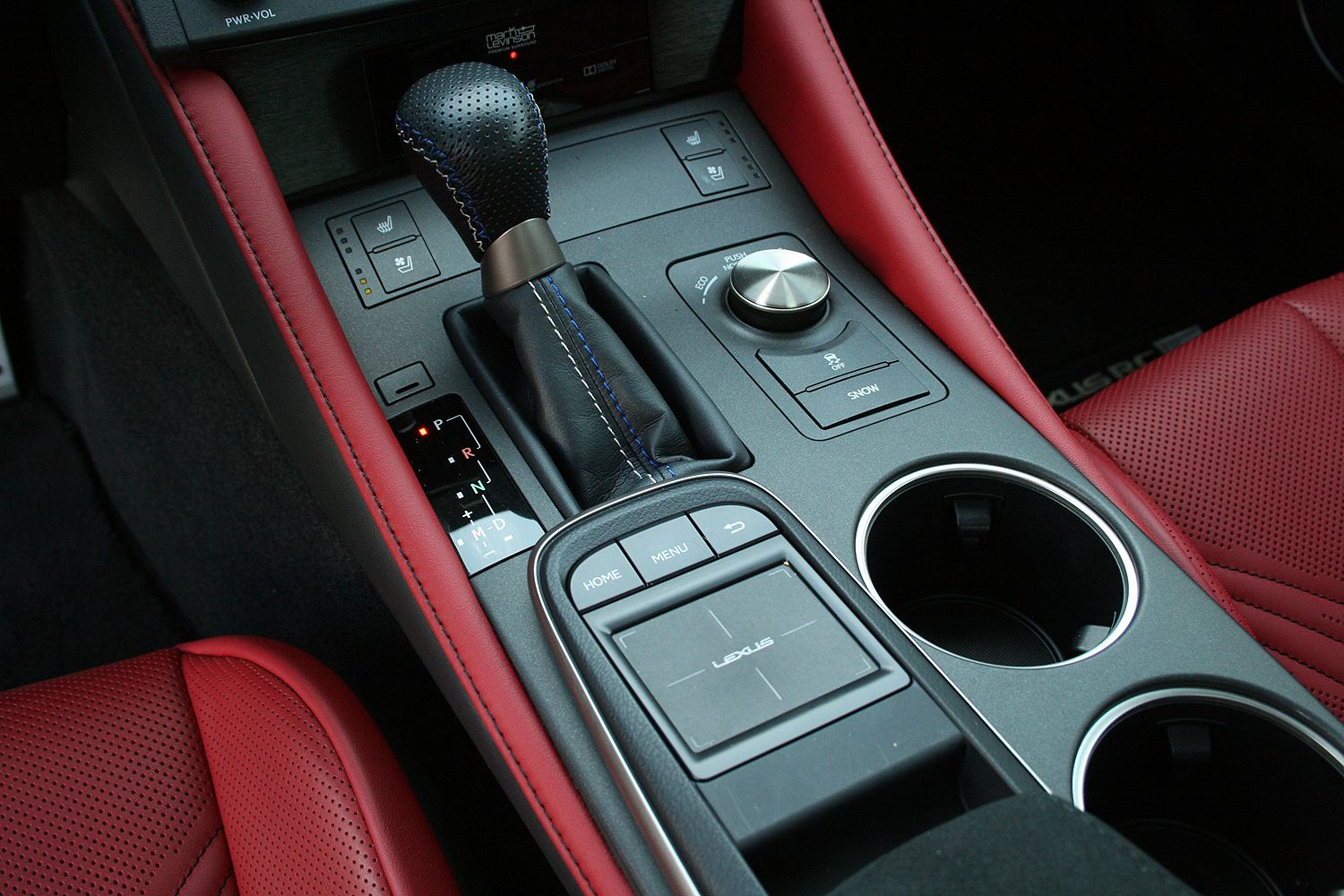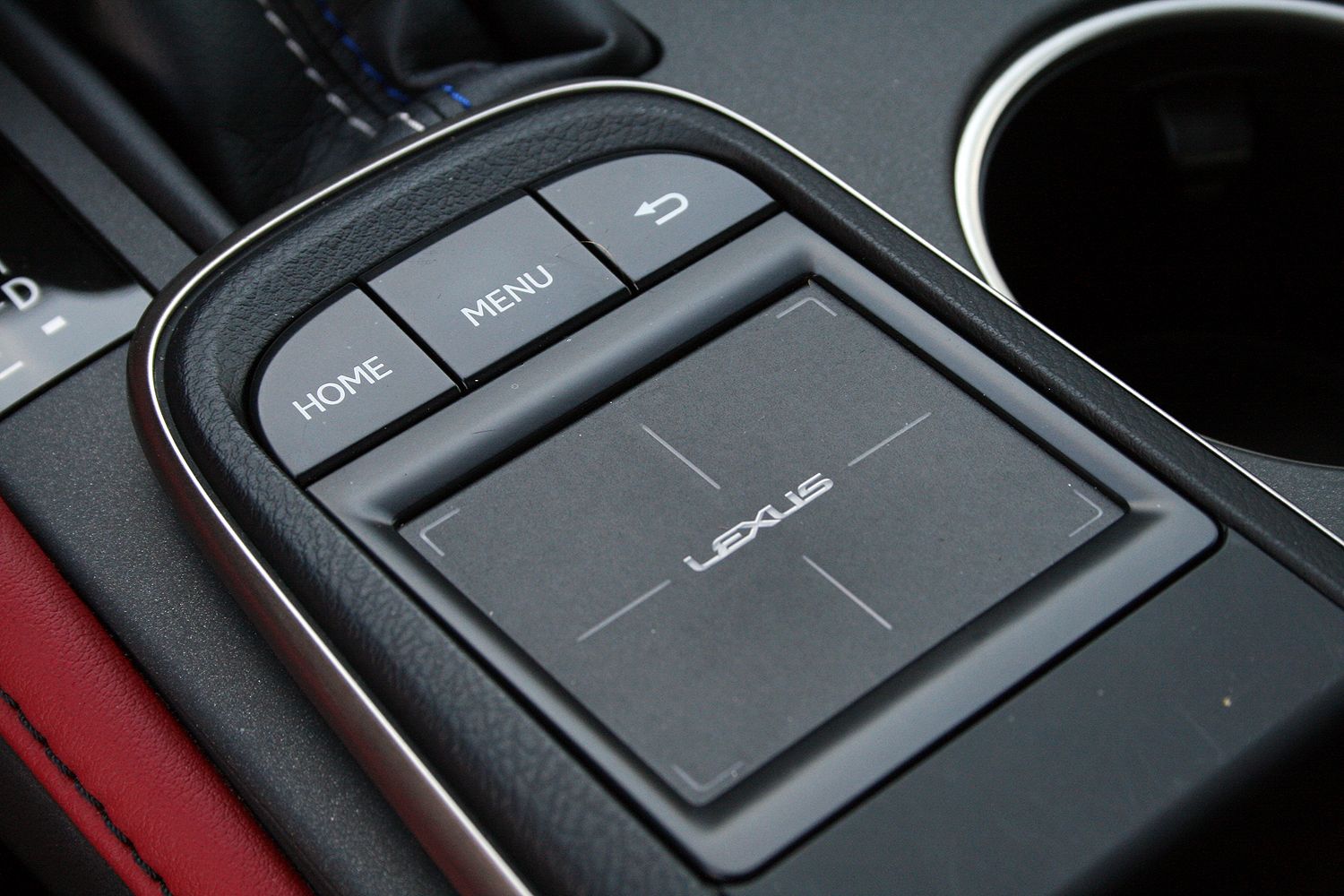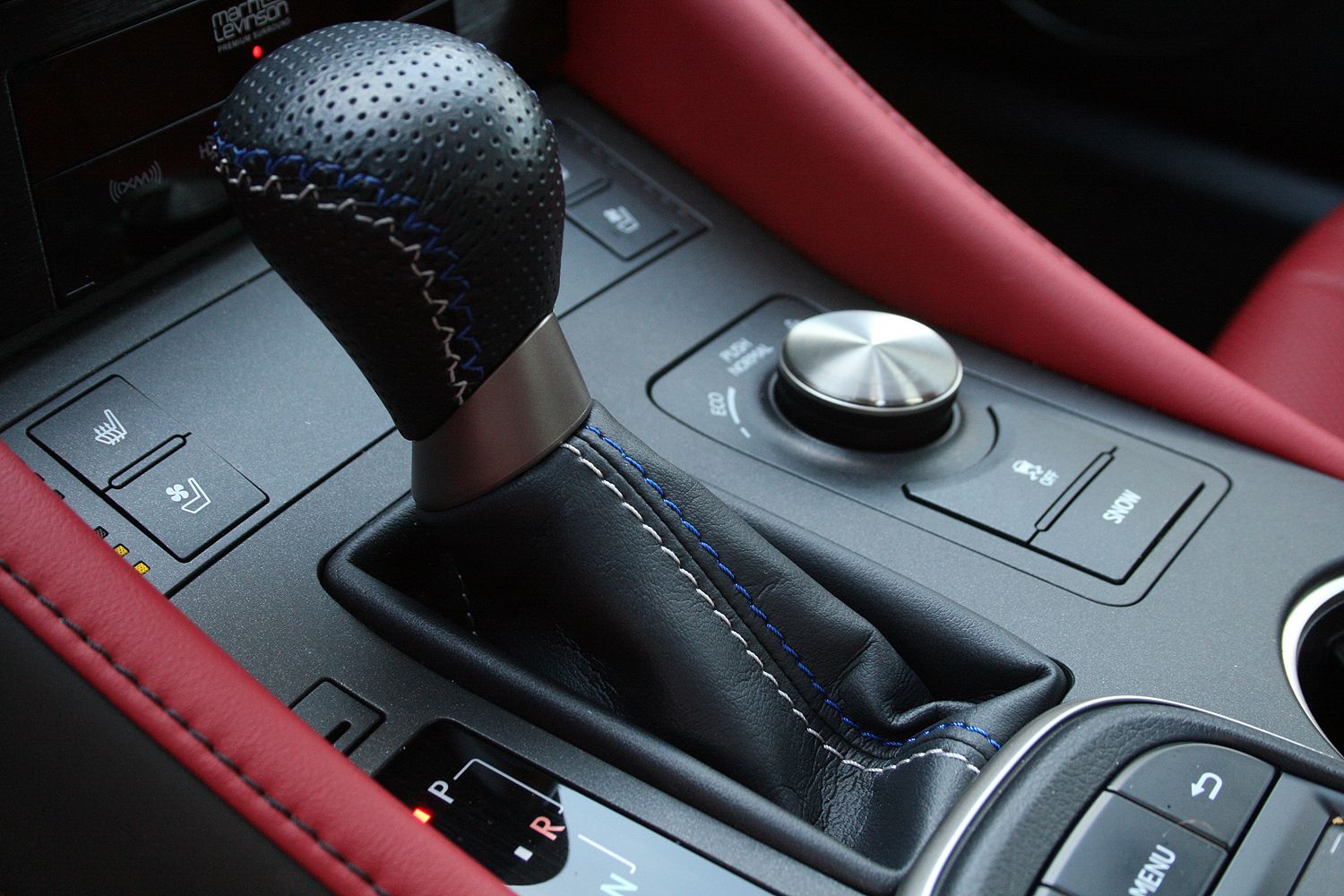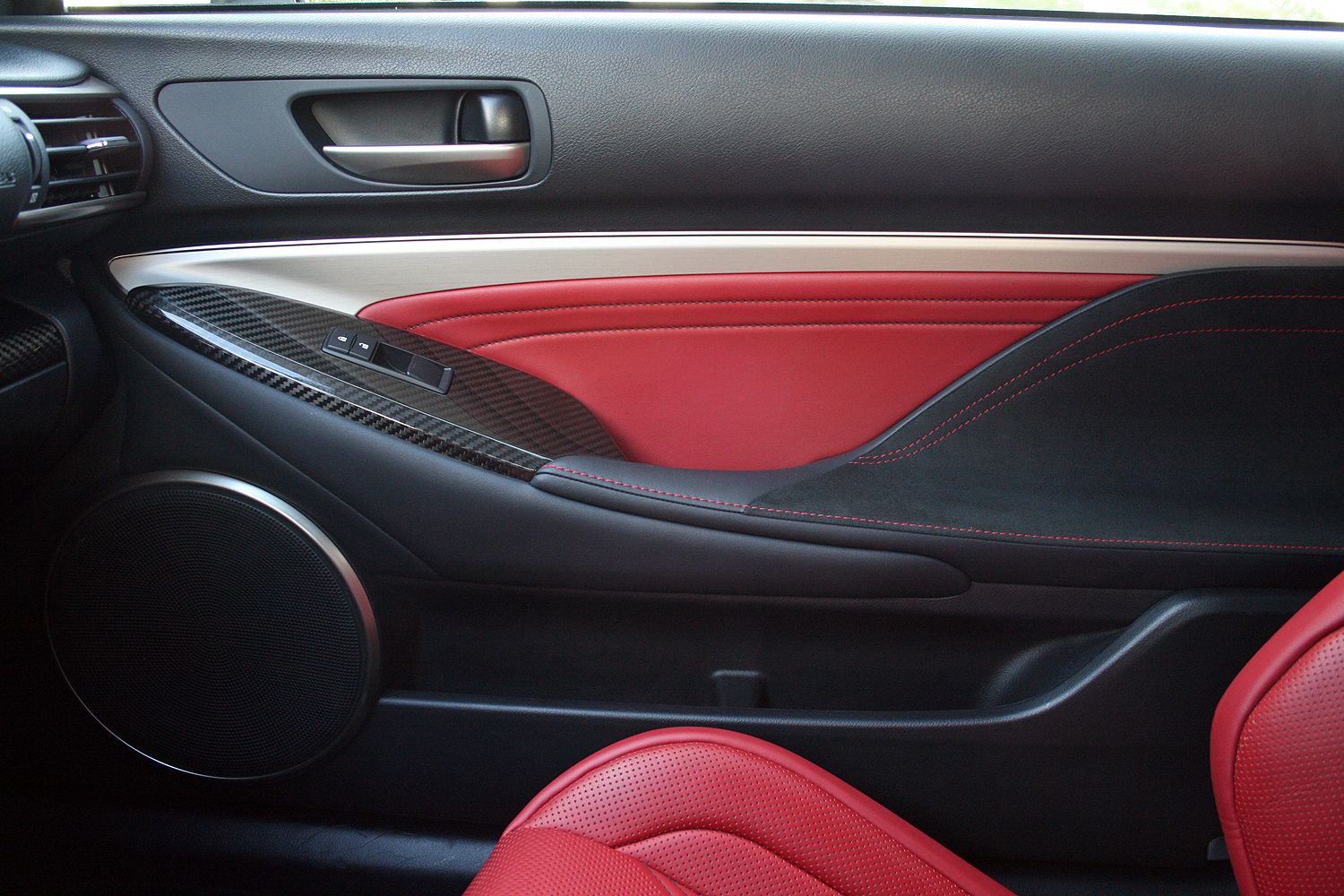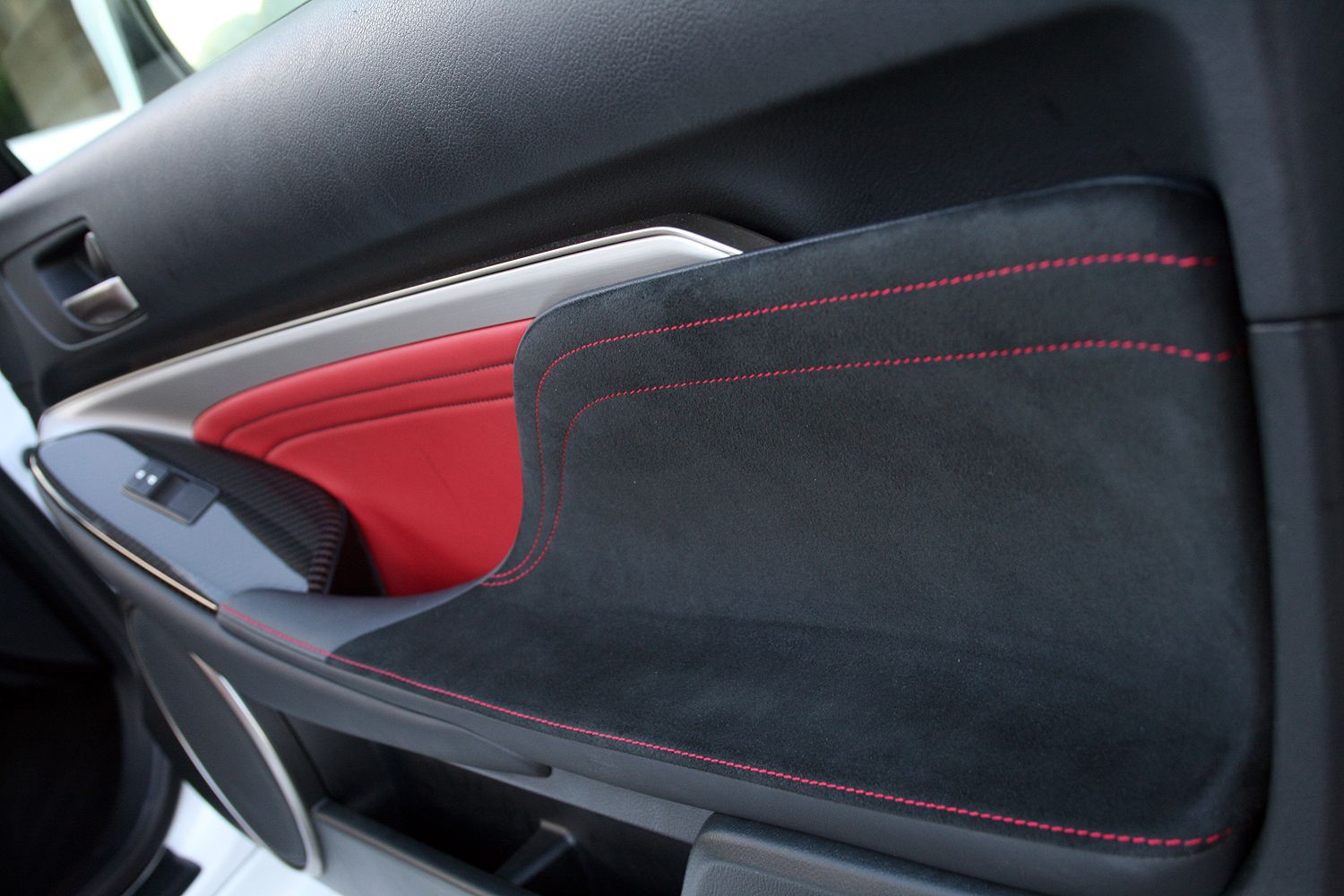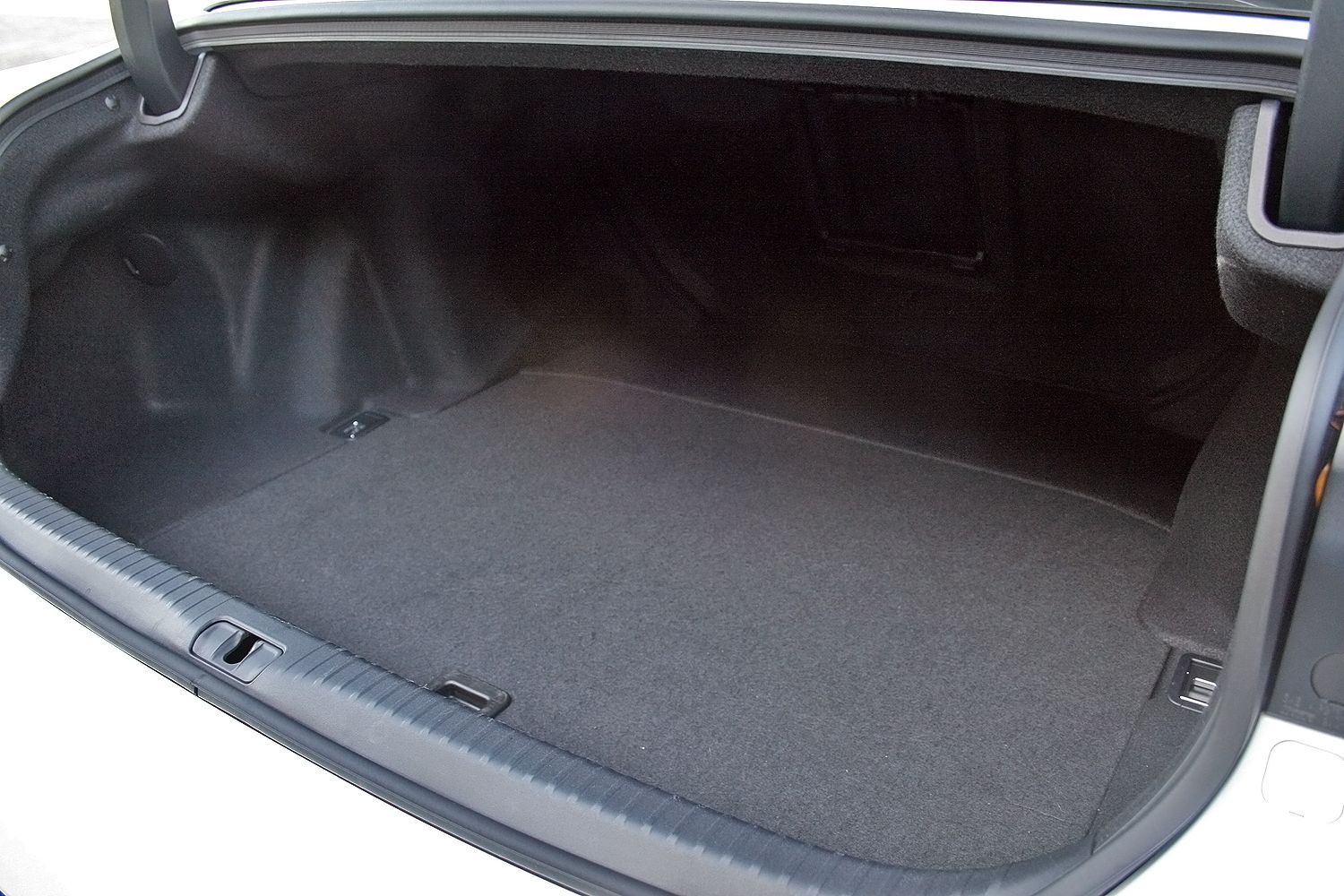Lexus->ke47 isn’t an old automotive brand, but in its 26 years of existence, it’s become known as “reliable luxury” with a big emphasis on soft, cushy sedans->ke142. However, in the last few years, the young automaker has worked to reverse that stereotype, adding a sharp degree of sport and fun into its chassis designs. With the introduction of the RC->ke4751 coupe for 2015, the sporty fun bar got raised even higher. The only problem is whether the car appealed to the typical Lexus buyer or if the automaker had to steal customers from its European rivals.
The RC is an interesting car with a fascinating engineering background. It stands alone in the Lexus lineup as the only coupe->ke141 – that is, if you don’t count the aging 2015 Lexus IS C hard-top convertible.->ke144 Not that you would; the IS C leans far more towards a beach boulevard cruiser rather than back-road runner. Though the IS C is available in F Sport trim, it doesn’t fall in the same class as even the base trim RC powered by the V-6. The RC is a far better handler.
But more to the engineering point, the RC enjoys the front subframe section from the GS->ke439 sedan and rear section of the new IS->ke500 sedan. Its suspension shares similar tuning and its ride is more sport-oriented than the typical Lexus of yesteryear. The RC’s midsection, ironically enough, is pulled from the IS C. The hard-top convertible’s extra-ridged center section directly translates to a more sturdy structure for the coupe. What’s more, I’d bet a reasonable sum that Lexus will eventually drop the IS C and replace it with a hardtop convertible version of the RC. But that’s just an educated guess.
So what’s it like to live with the hopped-up, V-8 version of the RC, the RC F?->ke4714 I spent a week with a fully loaded example to find out, so keep reading for more.
Continue reading for the full driven review
2015 Lexus RC F - Driven
- Make: Array
- Model: 2015 Lexus RC F - Driven
- Engine/Motor: V8
- Horsepower: 467 @ 7100
- Torque: 389 @ 4800
- Transmission: eight-speed auto
- [do not use] Vehicle Model: Array
Exterior
This marks my second time with the Lexus RC. I had the chance to sample the car in the rolling hills of New York and along the sweeping turns and long back straight of the Monticello track when the car debuted in the fourth quarter of 2014.
Just as it did then, the RC F proved to be a handsome looker. It’s sharp, angular and angry grille is flanked by menacing HID headlights and Nike-like swoosh marks acting as the LED daytime running lights. It’s active aero package helps keep components cool while giving it a more aggressive look than everything this side of the LFA.
Even the rear is sculpted like a sports car.->ke506 An active air diffuser rises from the deck lid at higher speeds, quad exhaust pipes protrude from under the glossy black bumper trim, and the fishhook-like taillights seem to have a tight squeeze on the rear end, keeping its shape in check.
The optional 19-inch, 20-spoke alloy wheels add depth to the side view thanks to their two-tone color scheme. Lastly, the large side gill is not only functional in pulling hot air from the front brakes, but sets up a character line that runs to the rear of the car. The car’s design is well integrated and looks purposeful.
Interior
Anyone familiar with the 2014 redesign of the 2014-2015 Lexus IS sedan will instantly recognize the RC’s interior. The sloping center console meets the twin air vents just below the slanted infotainment screen. The low-slung seats are encased between high windowsills and a tall center tunnel, giving the driver a sense of oneness with the car. Much of the dashboard is also familiar, especially on the passenger side.
Things are a bit different for the driver’s gauge cluster. Gone is the IS sedan’s LFA-like->ke2181 sliding tachometer and TFT displays, replaced by a stationary tach centered between a tiny speedometer to the right and a large TFT display to the left. It’s a bit disappointing to not have the fancy gauge cluster in the RC, though it likely makes IS owners feel a touch more special.
Beyond aesthetics, the RC F’s cabin is very functional. All the buttons and controls are where you’d expect them and things are generally easy to reach. The only real exceptions are the cup holders and the infotainment system’s track pad. You’ll have to get used to adjusting your shoulder up and elbow back in order to use the track pad.
Still, the cockpit is a great place to spend time. The seats are nicely bolstered and hold you tight during hard cornering. The view outside is generous for a 2+2 coupe and the side mirrors are large enough to nearly eliminate any blind spots. This gives the car an easy-to-toss feeling not always found in sports cars today.
As with all current Lexus products, the Enform software pulls duty in the infotainment screen. Menus are logically arranged and easy to find. Navigating between menus is done with the laptop-like track pad on the center console. It works well for those used to computers, but might prove to have a learning curve for folks not used to that style of input device. (Then again, what sports coupe buyer isn’t these days?) I did find the track pad easiest to use when set to the mid-range setting of sensitivity and the feedback vibrations turned off. Those vibrations, which are designed to confirm clicks, gave my finger an odd feeling that resembled getting shocked. Thankfully the settings menu is easily found and the feedback is quickly defeated.
Speaking of easy to use, the RC F does offer four seats and a trunk, but like any 2+2 coupe, the back seats are best left for the kids on occasion. The trunk, on the other hand, offers a decent amount of space. The hinge arms are tucked away so groceries aren’t crushed and several tie-downs are in place for securing larger items. A decent opening width also makes loading a week’s worth of luggage in an oversized bag a breeze.
Powertrain
While the standard Lexus RC comes powered by the 3.5-liter V-6 that makes 306 horsepower and 277 pound-feet of torque, the RC F enjoys a heavily reworked version of the naturally aspirated 5.0-liter V-8 found in the last-generation 2014 Lexus IS F. The new mill kicks out 467 horsepower and 389 pound-feet of torque – 51 more horsepower and 18 more pound-feet than before. The high-revving V-8 reaches its peak horsepower at 7,100 rpm while making peak torque at 4,800 revs. Still, there is an adequate amount of torque down low, even just off idle.
The V-8 boasts a variable air induction system that opens up at higher rpm, allowing more intake noise into the cabin and air into the intake manifold. When not pushed, the V-8 slips into an Atkinson combustion cycle, helping it conserve fuel on the highway. Lightweight titanium valves reside in all 32 positions and are complemented by the new lightweight crankshaft and connecting rods. The upgraded parts add an additional 500 revs to the 5.0-liter’s max rpm over the IS F’s, leading to a mighty 7,800 revs at full tilt. A larger throttle body and high-flow fuel injectors finish off the improvements.
The V-8 is mated to Lexus’ own eight-speed automatic transmission with paddle shifters. The steering wheel-mounted paddles offer quick shifts when in Sport and Sport+ modes, though not as quick as a dual clutch unit or ZF’s eight-speed auto. Out back, the RC F comes standard with a Torsen limited-slip differential while a high-tech torque vectoring diff is optional. My tester came with the standard limited-slip. Only those dead-set on track-day events or canyon carving would benefit from the torque vectoring unit, as the pink slip daddy does a good job of getting power to both rear tires.
For those curious about fuel economy, the RC F is rated by the EPA to get 16 mpg city, 25 mpg highway, and 19 mpg combined. After a week of rather cautious driving, I managed to average 20.5 mpg. Stay buried in the throttle, though, and the 5.0-liter will drink premium fuel with a purpose.
Driving Impressions
My time at the track showed the RC F is a good handler when pushed hard. It’s Michelin Pilot Super Sport tires do a great job of holding the asphalt while its sport-tuned suspension keeps the car flat through the corners. Its large, six-piston Brembo front brakes clamp slotted and ventilated front rotors, while the rear, four-piston calipers clamp non-slotted but vented discs. The brakes do an amazing job at slowing the heavy car and are fairly resistant to fade.
Casual driving during the week proved those race-ready components are livable on a daily basis. The brakes offer a solid pedal feel without being grabby, and the tires are surprisingly resistant to hydroplaning in torrential Florida downpours. The fat Michelins do give off plenty of road noise, making the cabin very un-Lexus like.
The suspension also falls into that un-Lexus-like category, especially on broken pavement. The ride is sports-car stiff, but not to the point of being uncomfortable or tiresome. Steering is sharp and direct with a decent amount of communication from the tires. On-center feel is crisp and is absent of any dead space.
Acceleration is fantastic, but only with a generous amount of throttle, as the quick-revving V-8’s power lives up high. That aspect does make in-city driving rather smooth thanks to a relaxed throttle travel. Nighttime driving proves the worth of HID headlights. The RC F’s white-toned beams illuminate far into the distance with a wide pattern up close. Click on the high beams and you’d think Lexus installed some LED off-road lights behind the grille.
All told, the RC F makes a great GT car, though its suspension is slightly stiffer than what would normally be preferred for cruising. Still, the RC F is rewarding to drive.
Pricing
The standard Lexus RC starts at $42,790. That’s not a bad deal considering the V-6 makes 306 horsepower. The RC F, however, ups the ante to $62,400. That price, as on the base car, can quickly escalate when adding options. My tester came fitted with the Premium Package ($4,400), navigation and Mark Levinson audio upgrade ($2,840), 19-inch wheels ($1,500), leather seat upgrade ($800), and the moonroof ($1,100).
A $925 destination charge is then tacked on, pushing the as-tested MSRP to $73,965.
Competition
2015 BMW M4
The BMW M3->ke2366 Coupe turned M4->ke4183 Coupe has long been regarded as the best handling car this side of a low-slung supercar.->ke177 Its compact packaging, relatively light weight, and powerful engine make the current M4 a force to be reckoned with. Redesigned for 2015, the M4 Coupe comes with a 3.0-liter turbocharged inline six-cylinder making a surprising 425 horsepower and 406 pound-feet of torque. With a curb weight of just 3,300 pounds, the M4 makes better use of its horsepower. The sprint to 60 happens in 4.1 seconds verses the RC F’s 4.4. Government influence keeps the M4 front going faster than 155 mph while the RC F can reach 168 before its limiter kicks in.
Pricing is surprisingly close, with the M4 starting at $62,000. Options are on the pricy side for BMW->ke178 and a loaded-out example will quickly reach into the $80,000 range.
Read our full review here.
2014 Audi RS5
The Audi->ke14 tops this trio in terms of power thanks to its 4.2-liter V-8 that kicks out 450 horsepower and 317 pound-feet of torque. Audi’s quattro AWD system also gives the RS5->ke2628 an advantage at the drag strip and on less than ideal pavement conditions. Its S-tronic seven-speed gearbox issues lightning fast shifts though its steering-wheel-mounted paddles. The Audi offers one of the industry’s best interiors with both materials and build quality cresting above the competition.
Prices for the RS5 do start higher than both the BMW and Lexus, at $70,000. Checking every box will result in a low $80,000 sticker price, so a top-spec model is on par with the M4.
Read our full review here.
Conclusion
Lexus might be relatively new at building sporty sedans and coupes, but the RC F proves the automaker is headed in the right direction. Its high-revving V-8, quick-shifting eight-speed auto, usable interior and trunk space, grippy tires, and killer looks all combine into a respectable car.
However, things aren’t all perfect. The RC F is a tad porky, weighing in at 4,048 pounds. The all-aluminum engine is sweet, but is down on power compared to its curb weight and the competition. Adding another 75 to 100 horsepower and getting the weight down below 4,000 pounds would do wonders for the car. Tire noise is invasive and there is little space for odds and ends inside the cabin.
Nevertheless, the RC F is a very respectable car that warrants attention. It might not outpace a BMW M4, but it gives the RS5 nightmares and its easy-to-live-with demeanor and Toyota craftsmanship make it a hard bargain to pass up.

